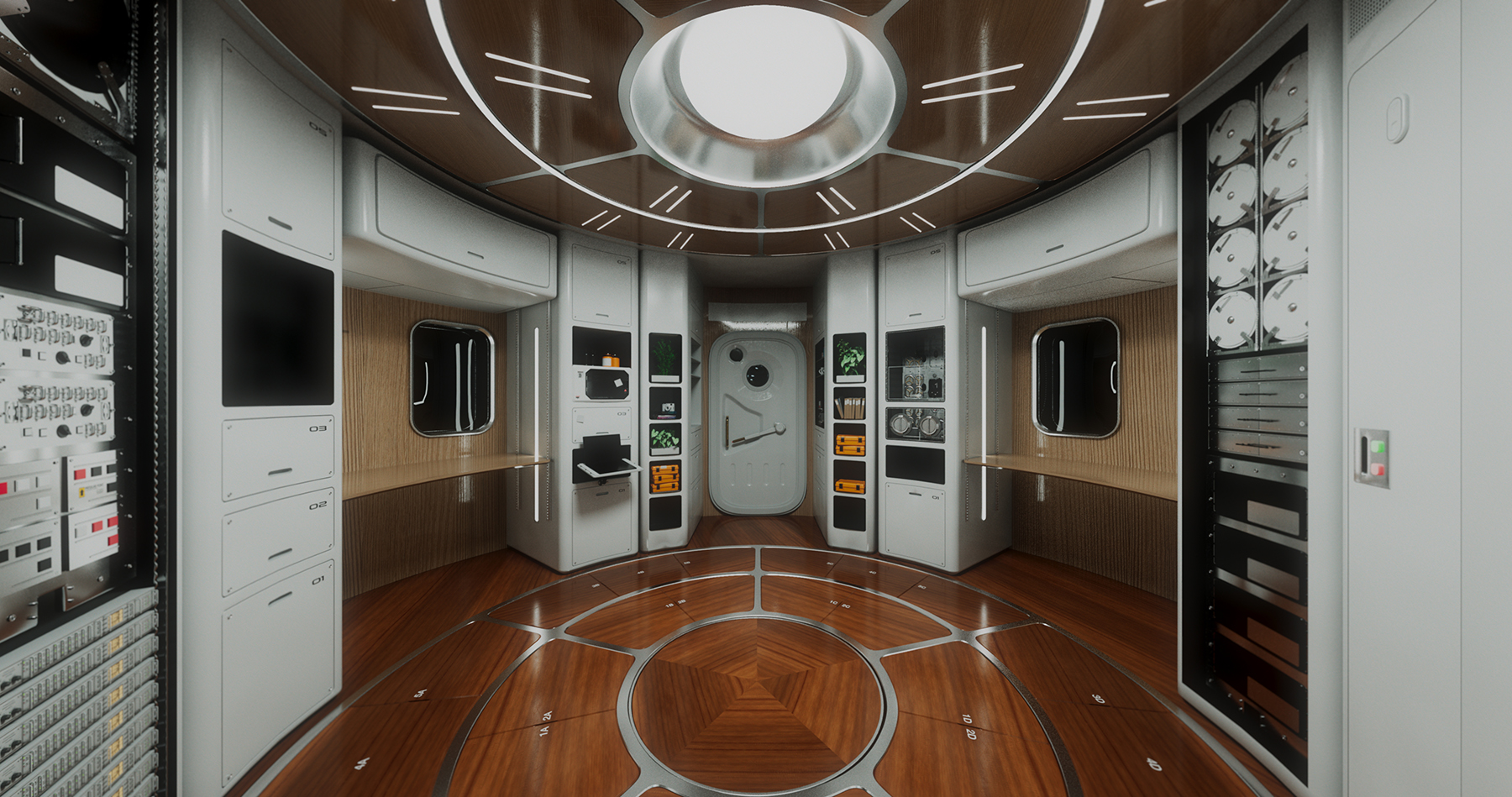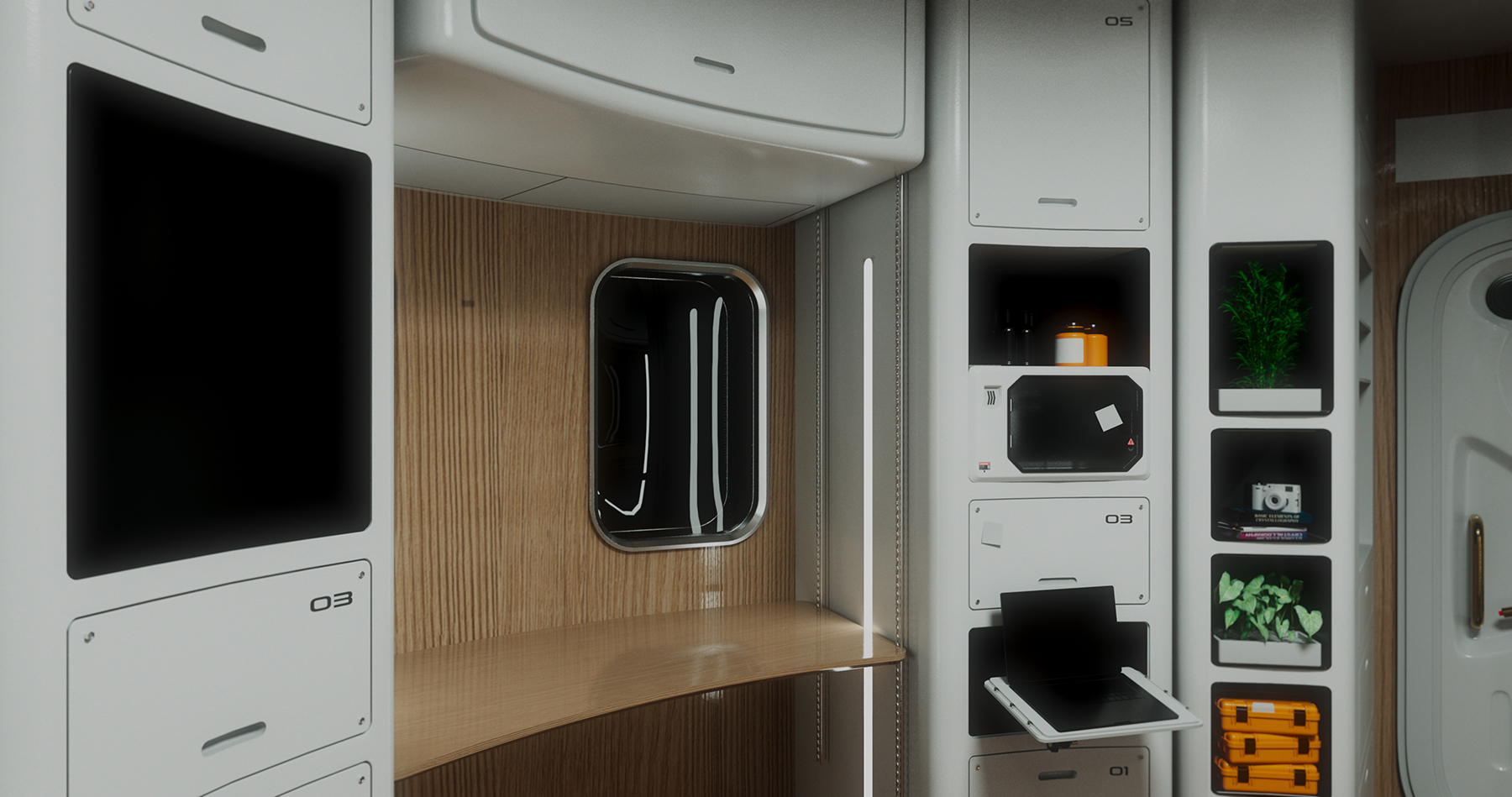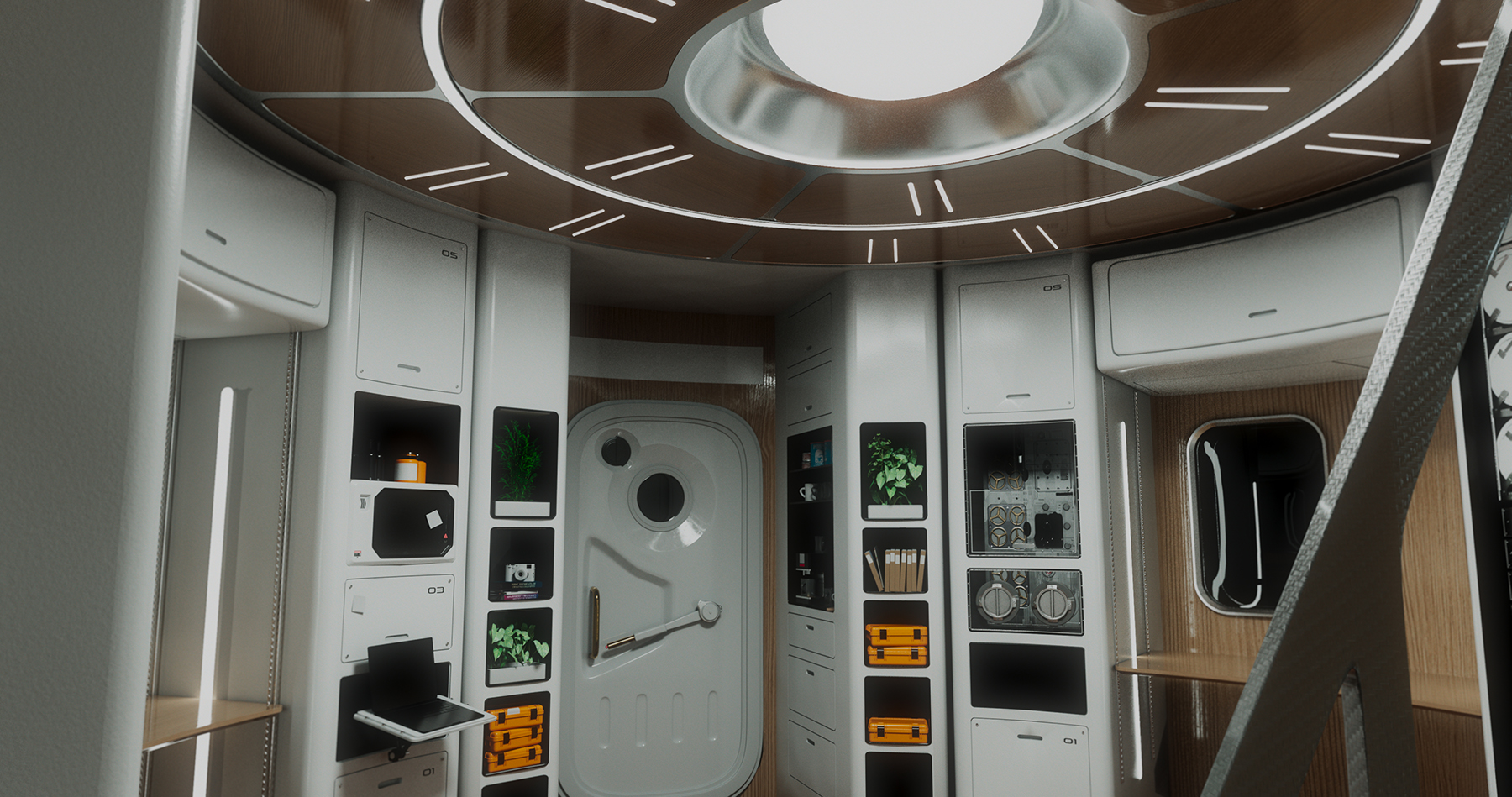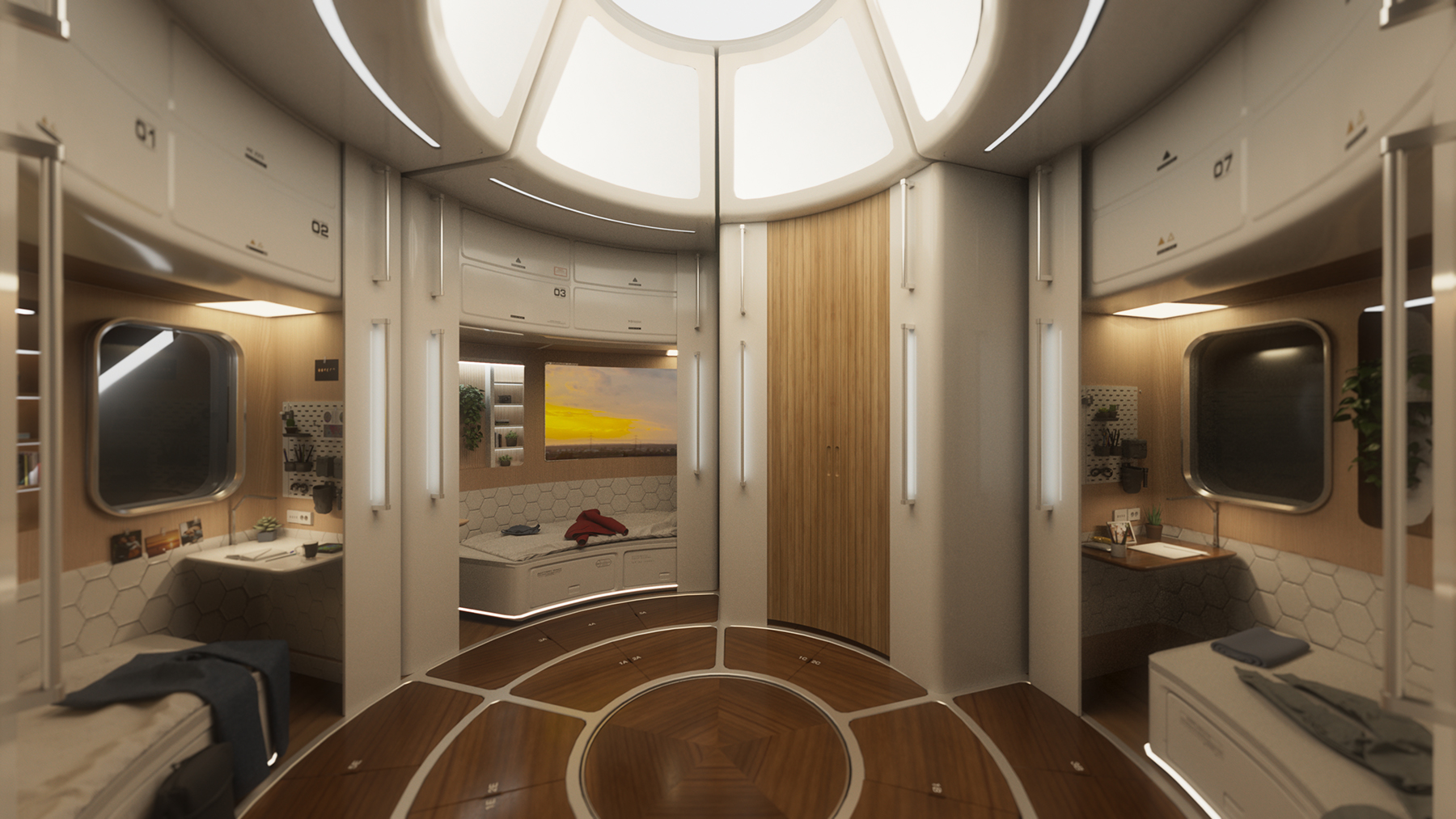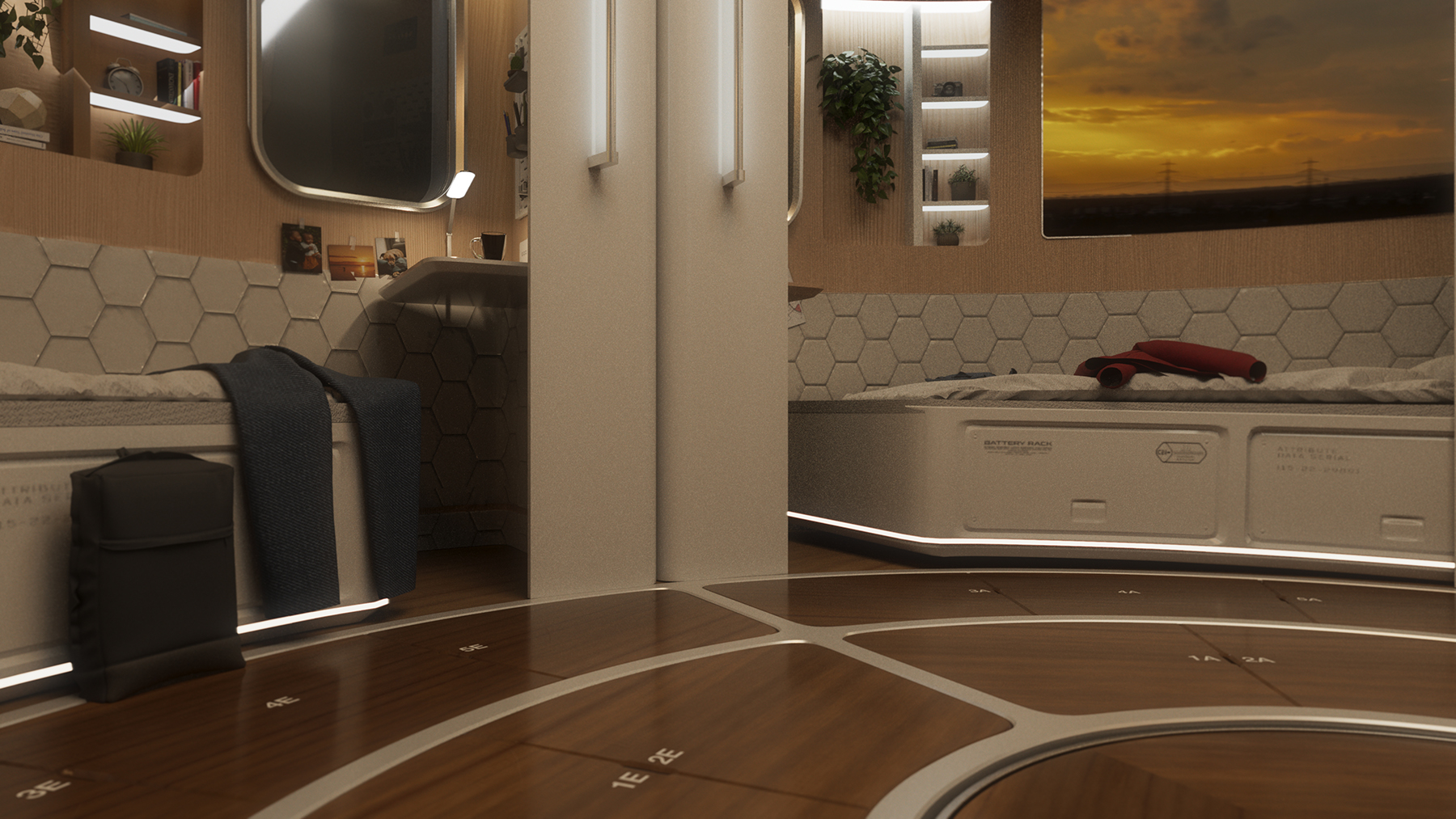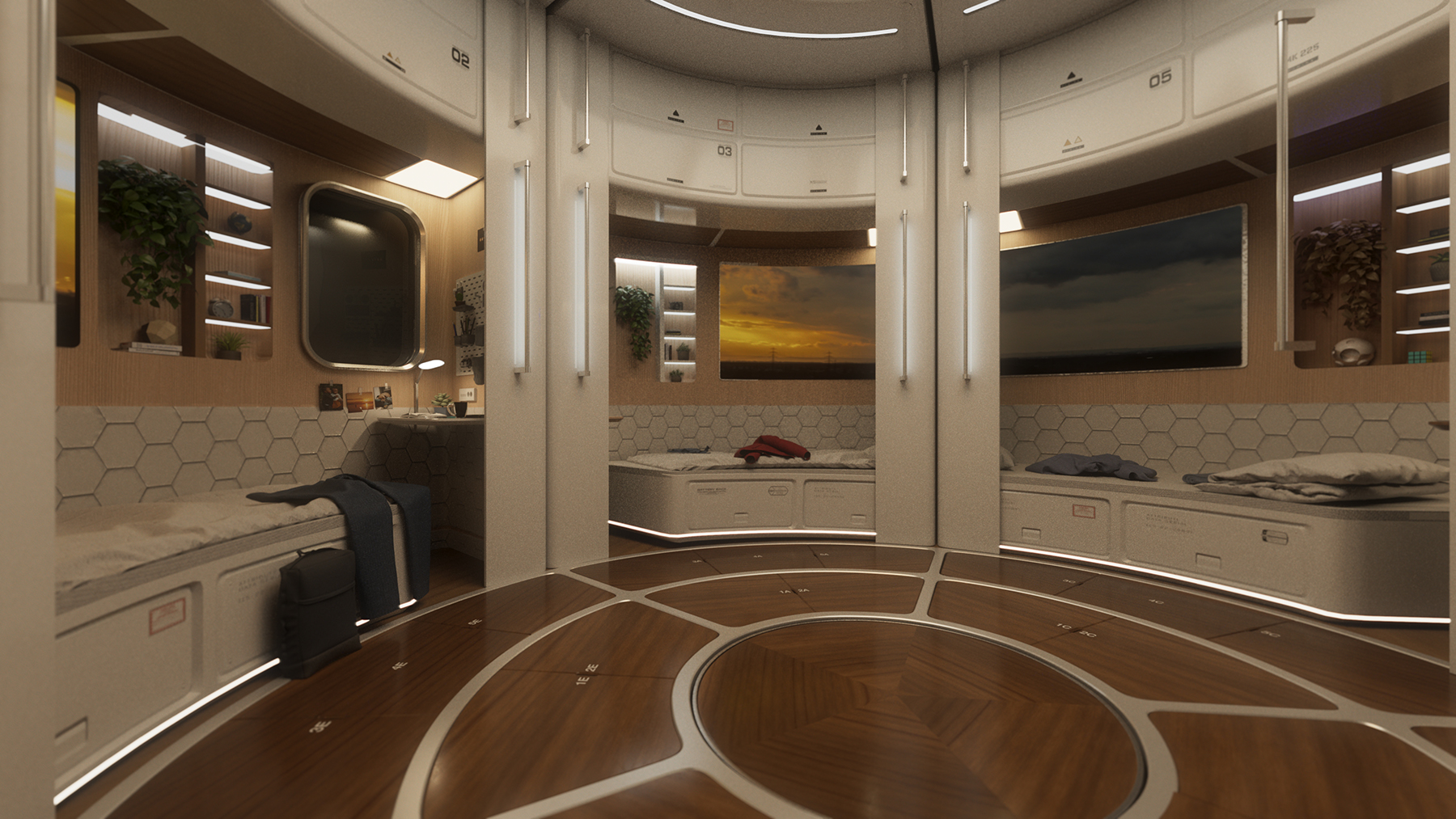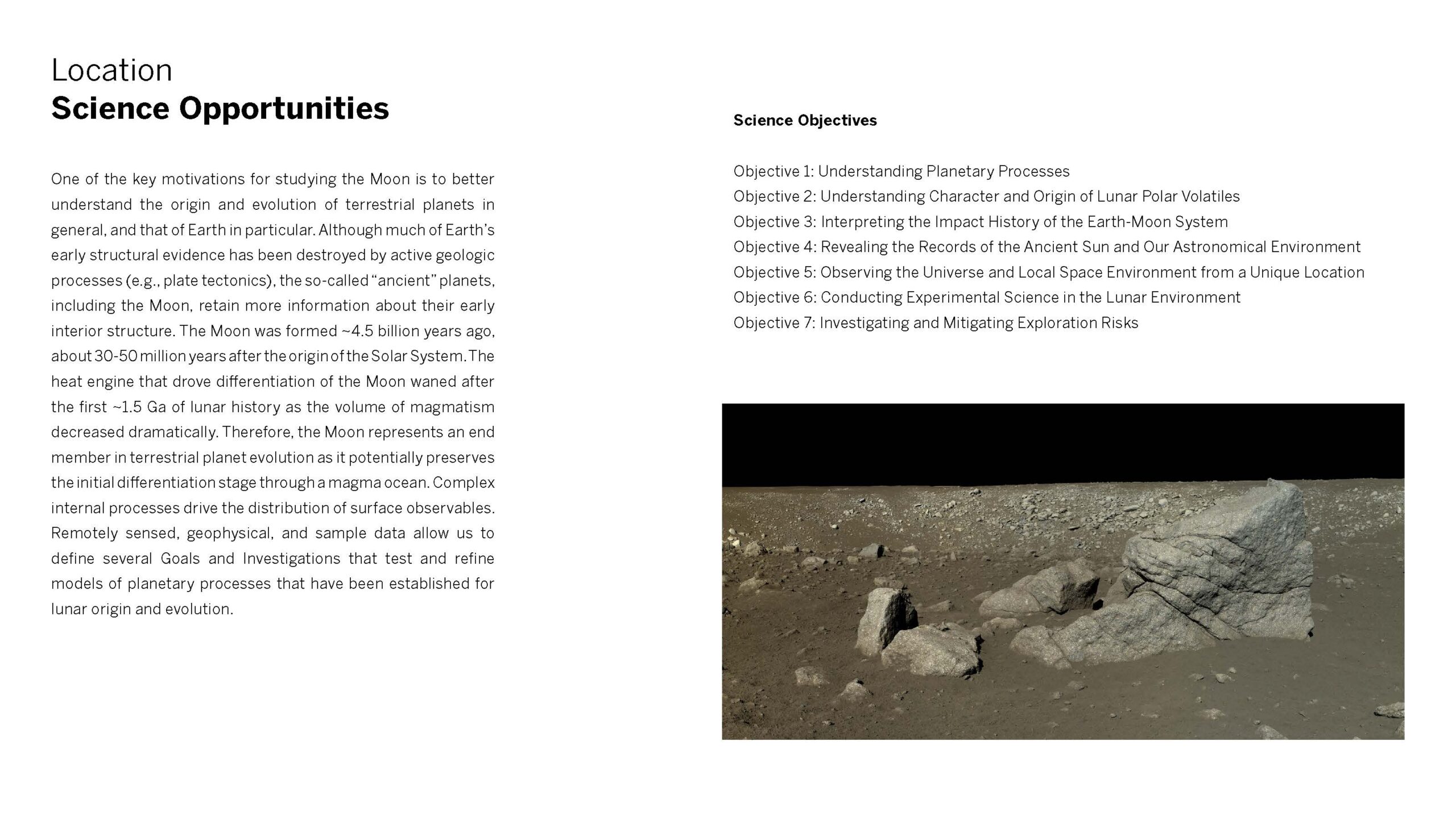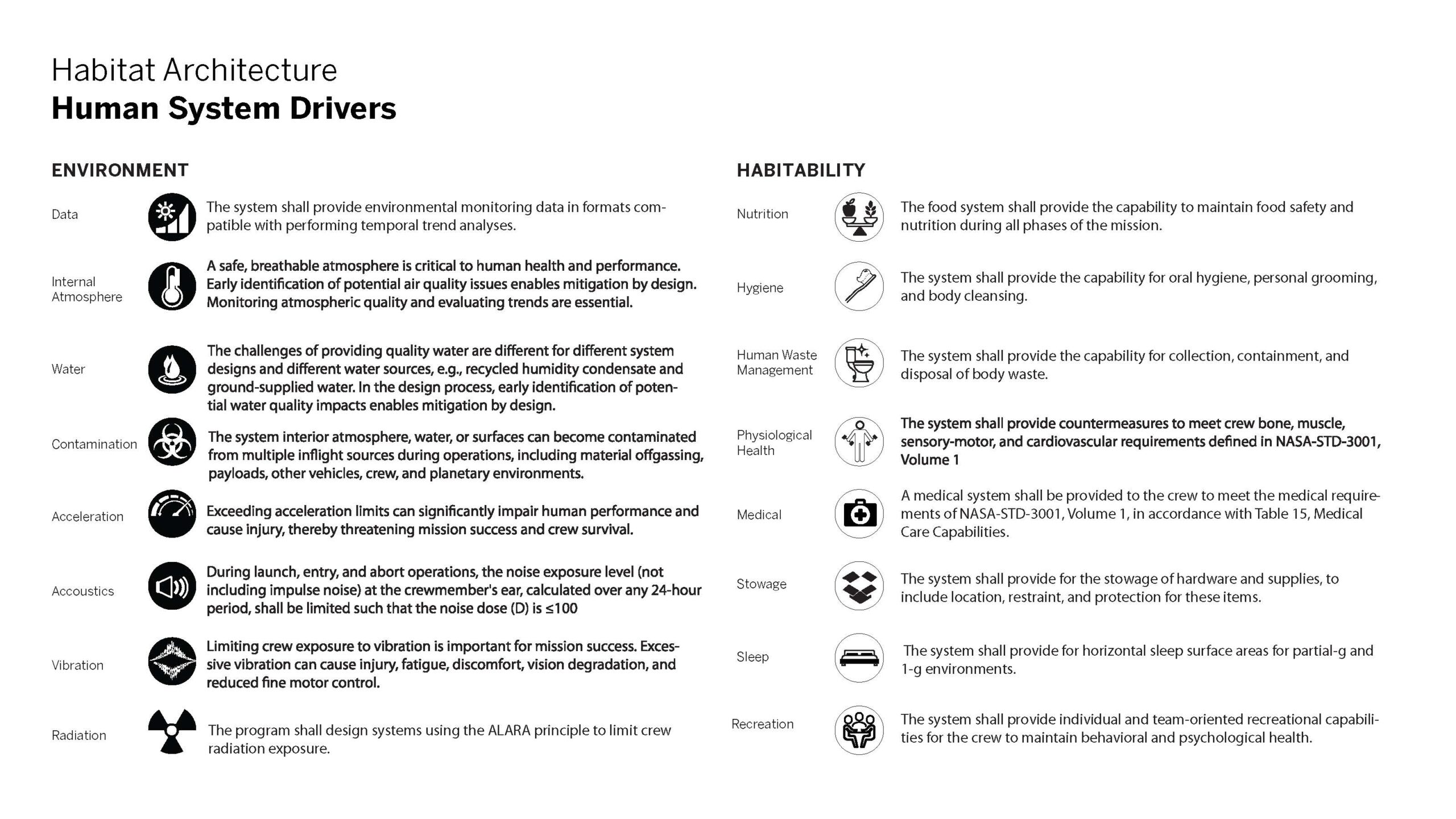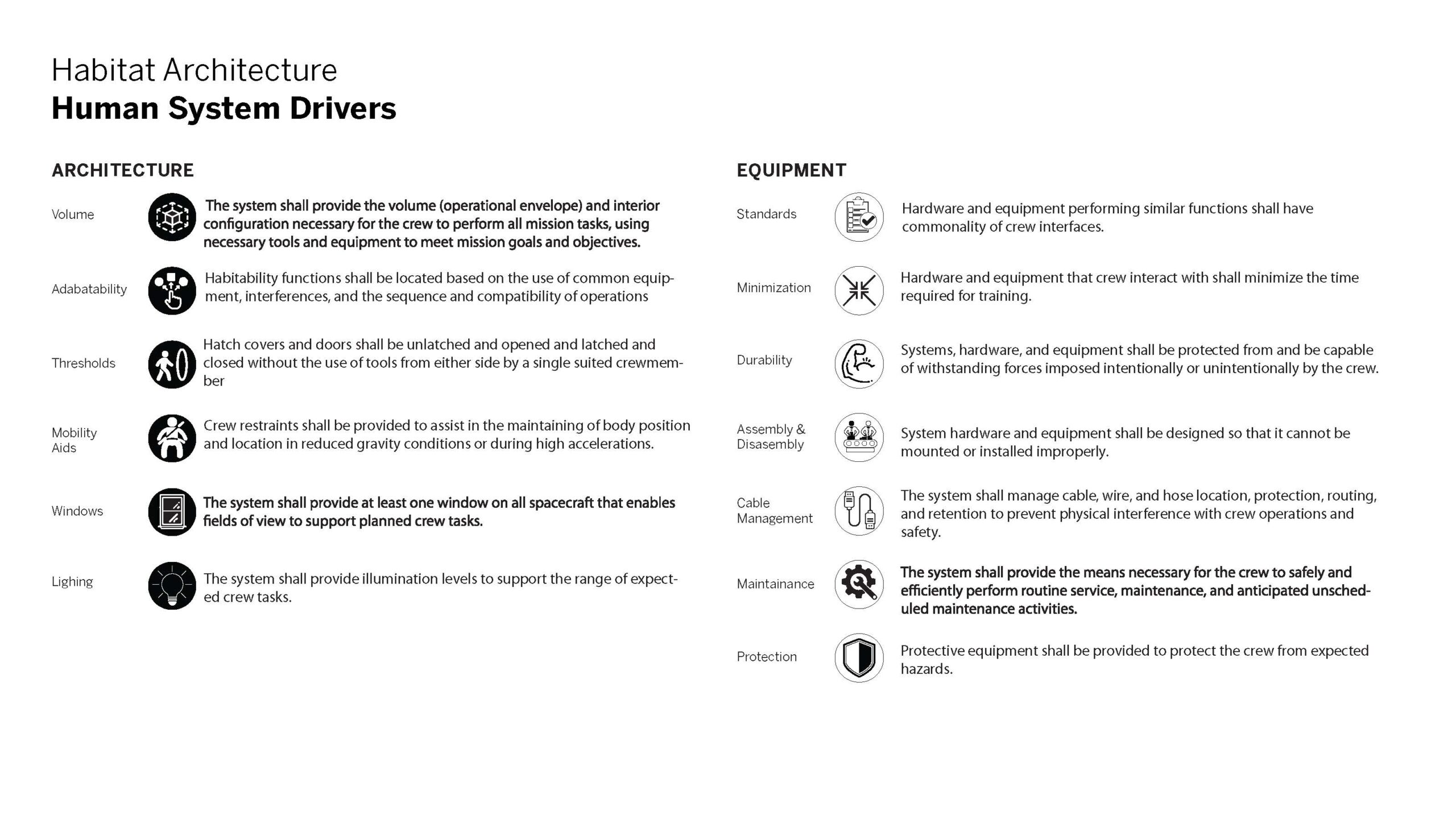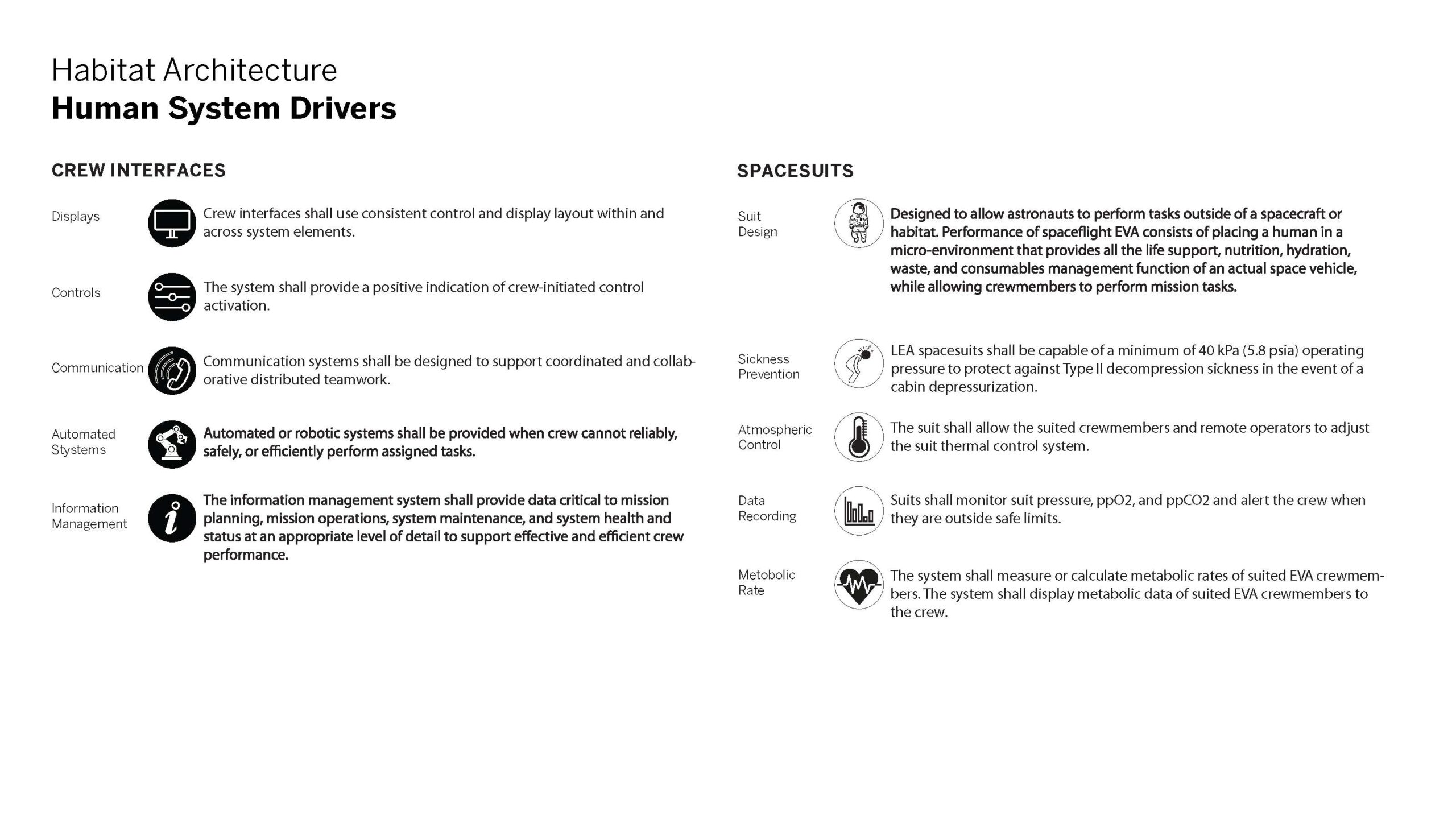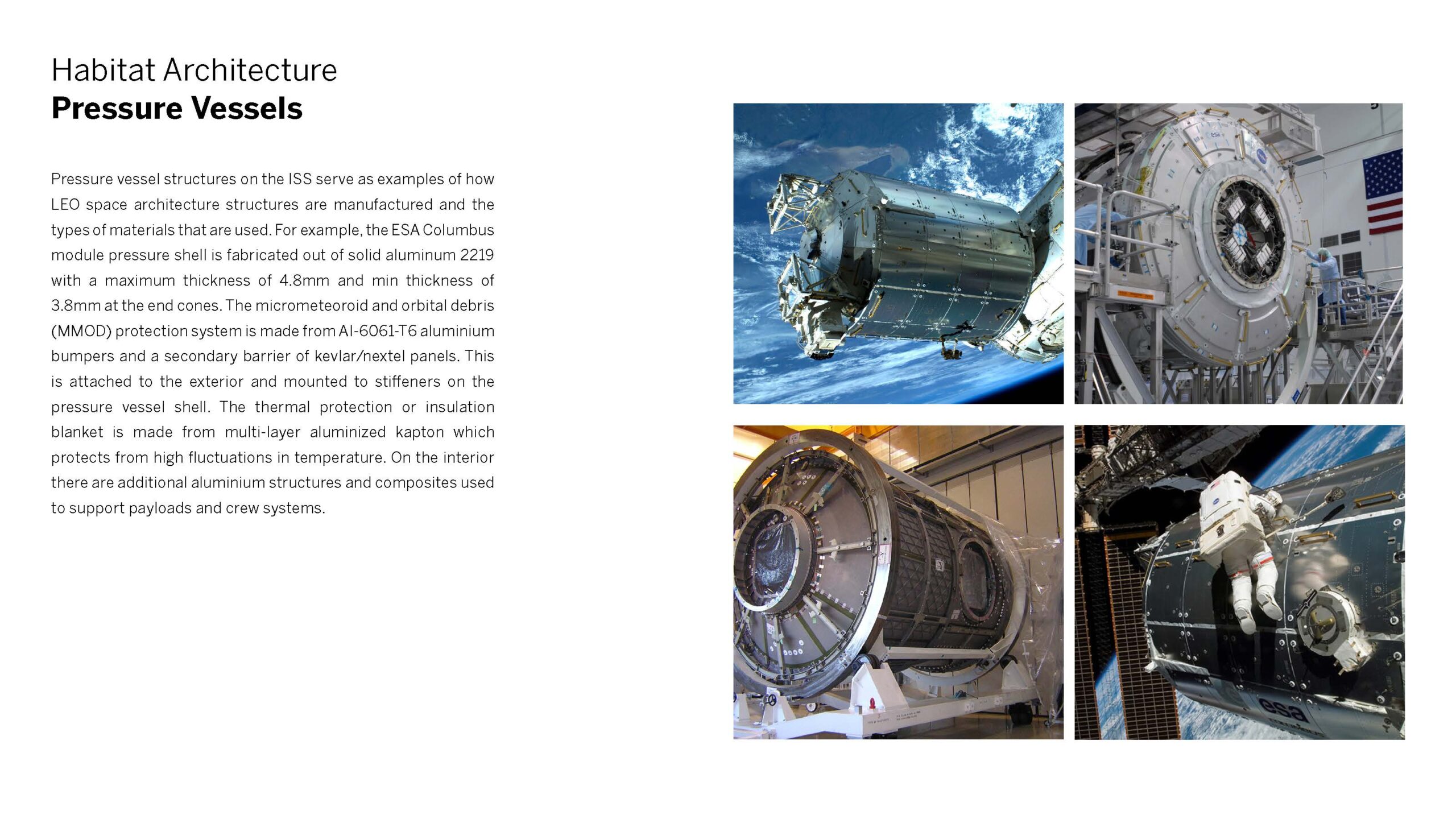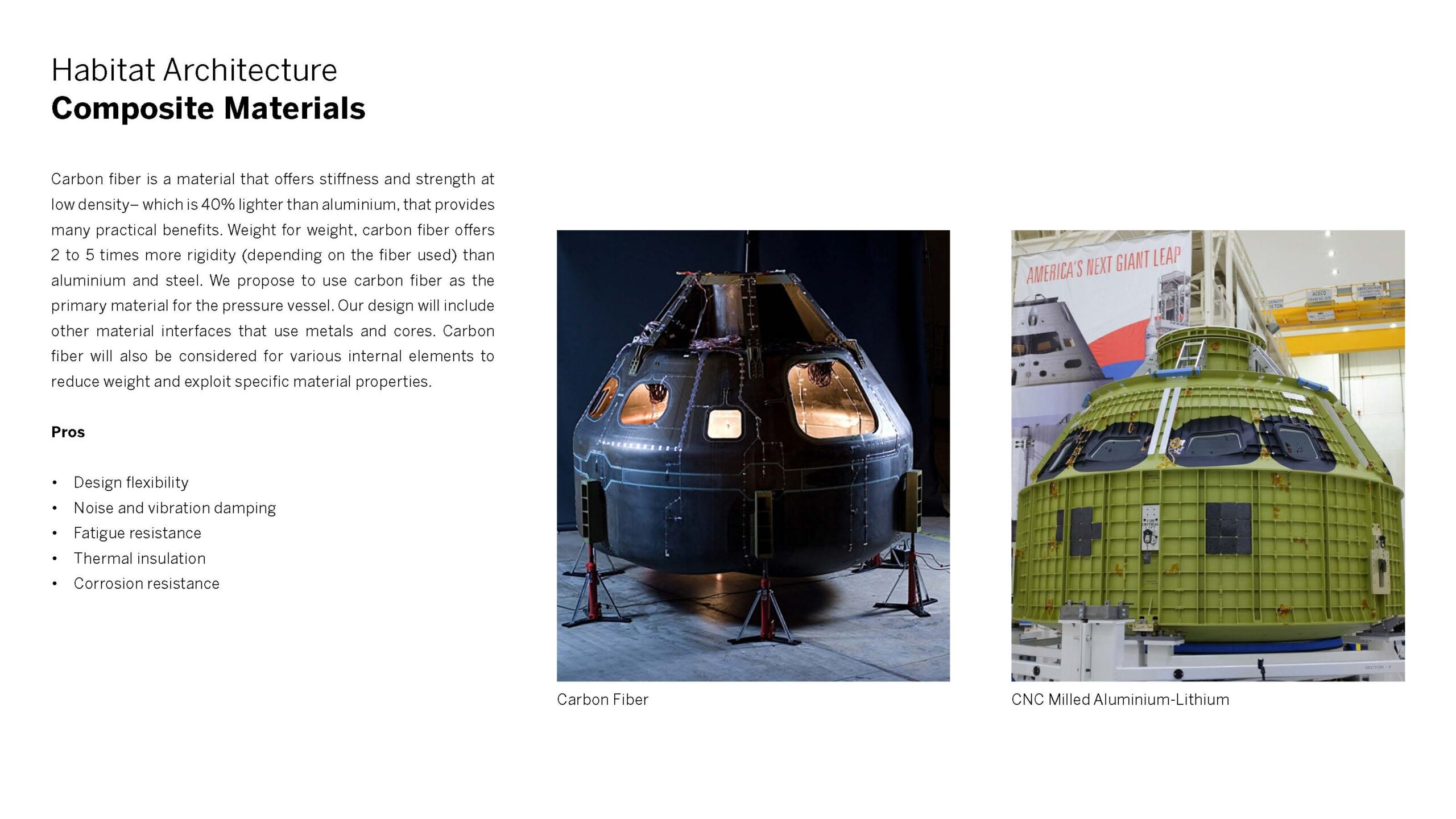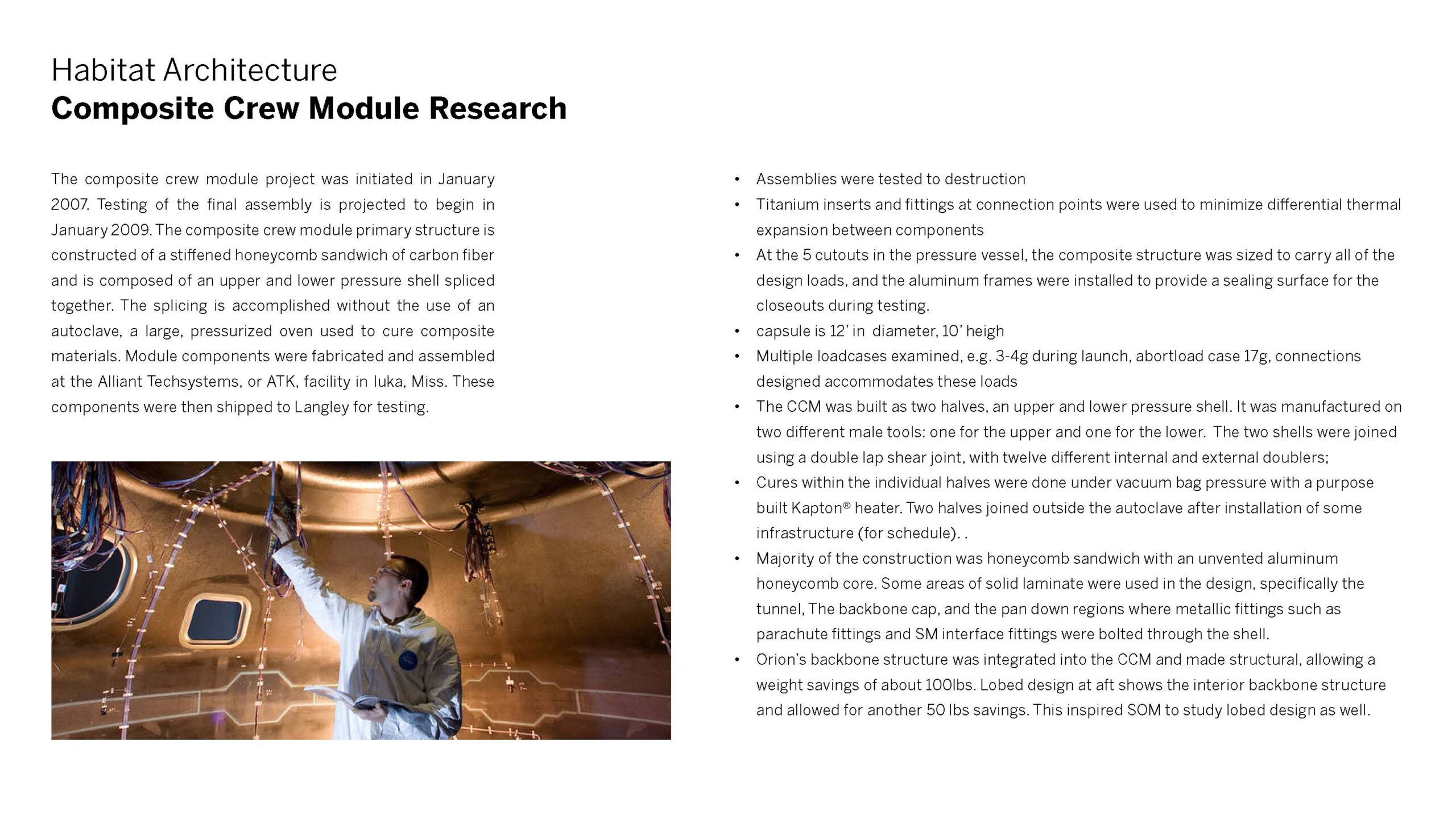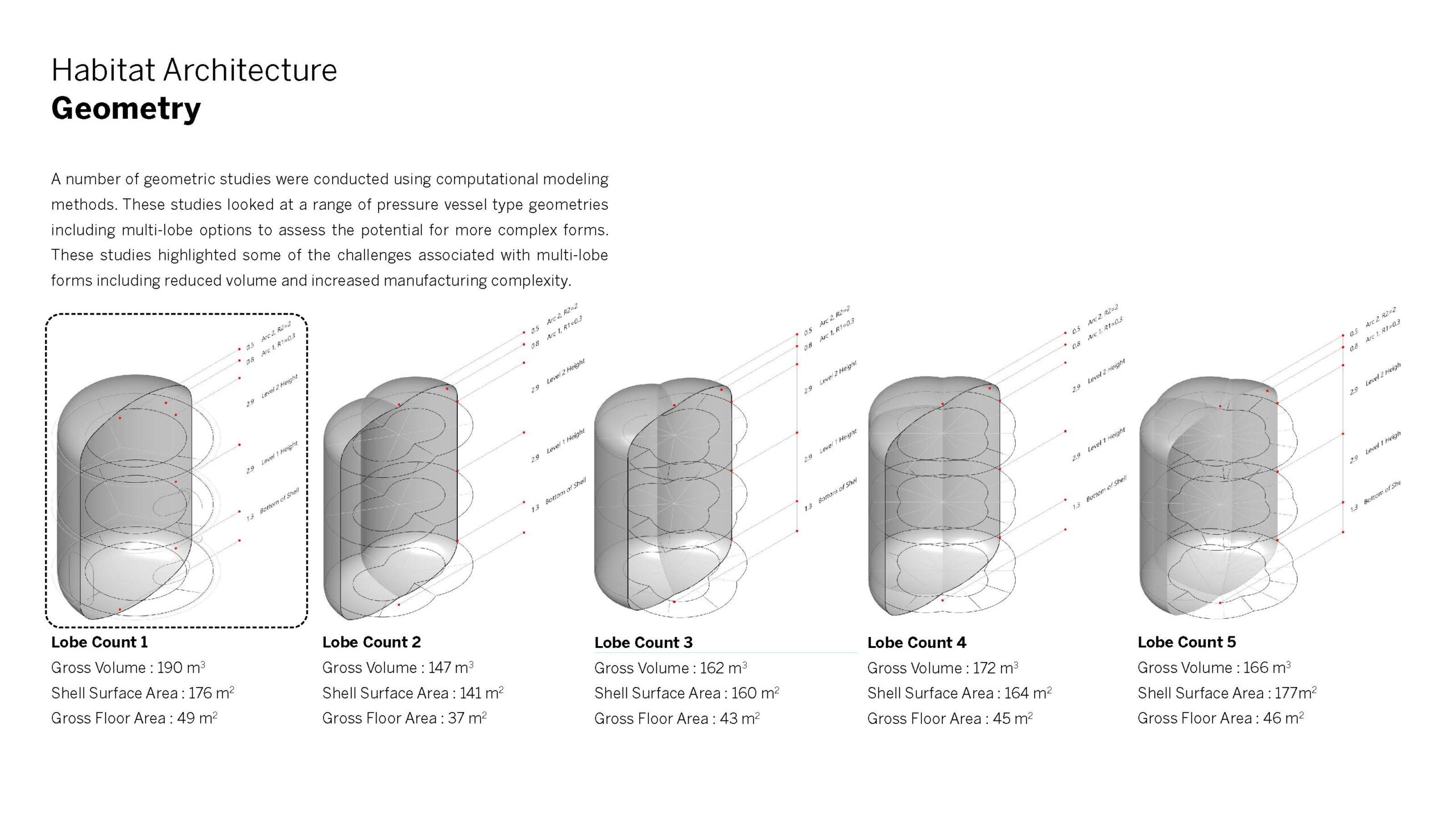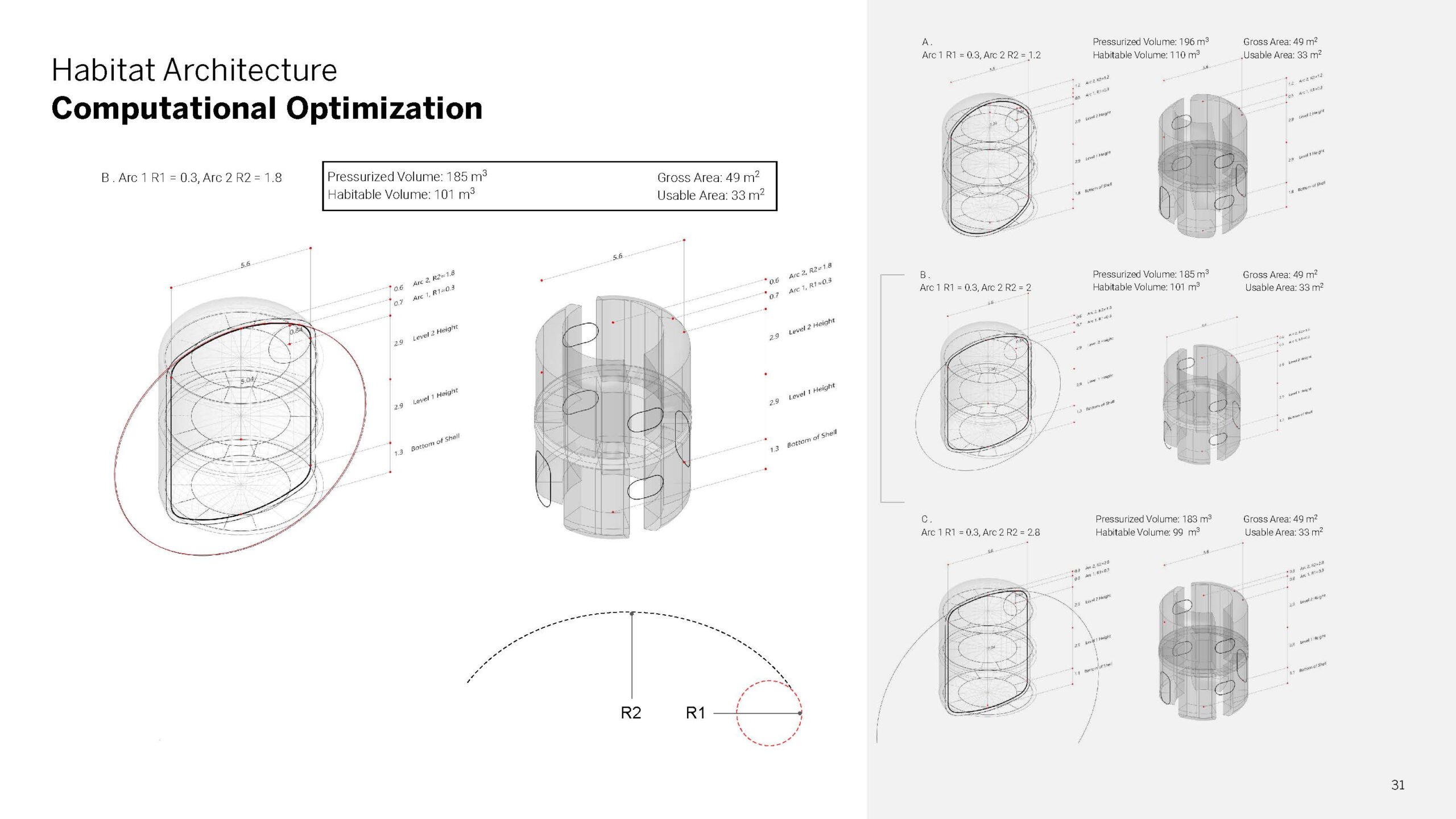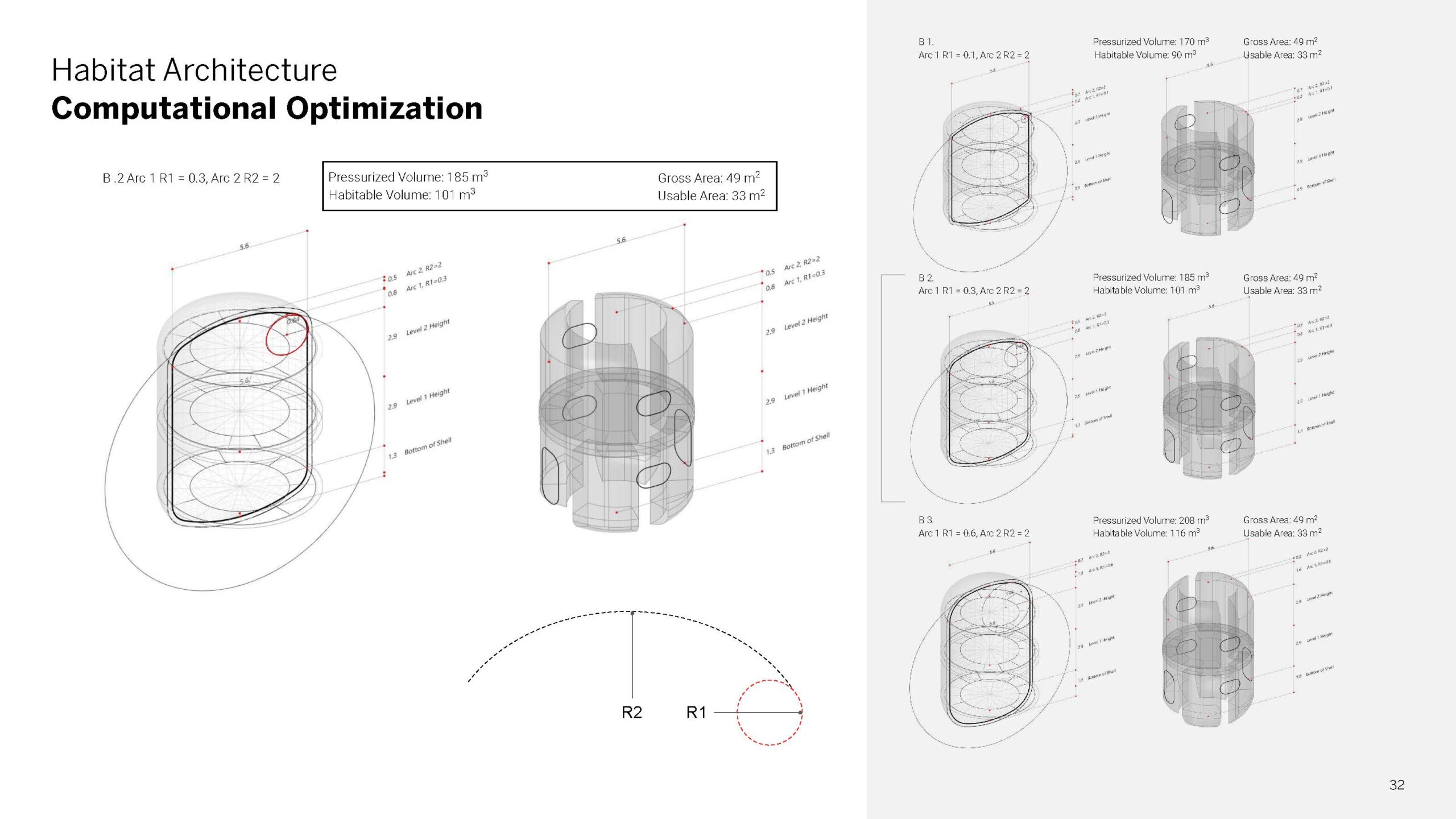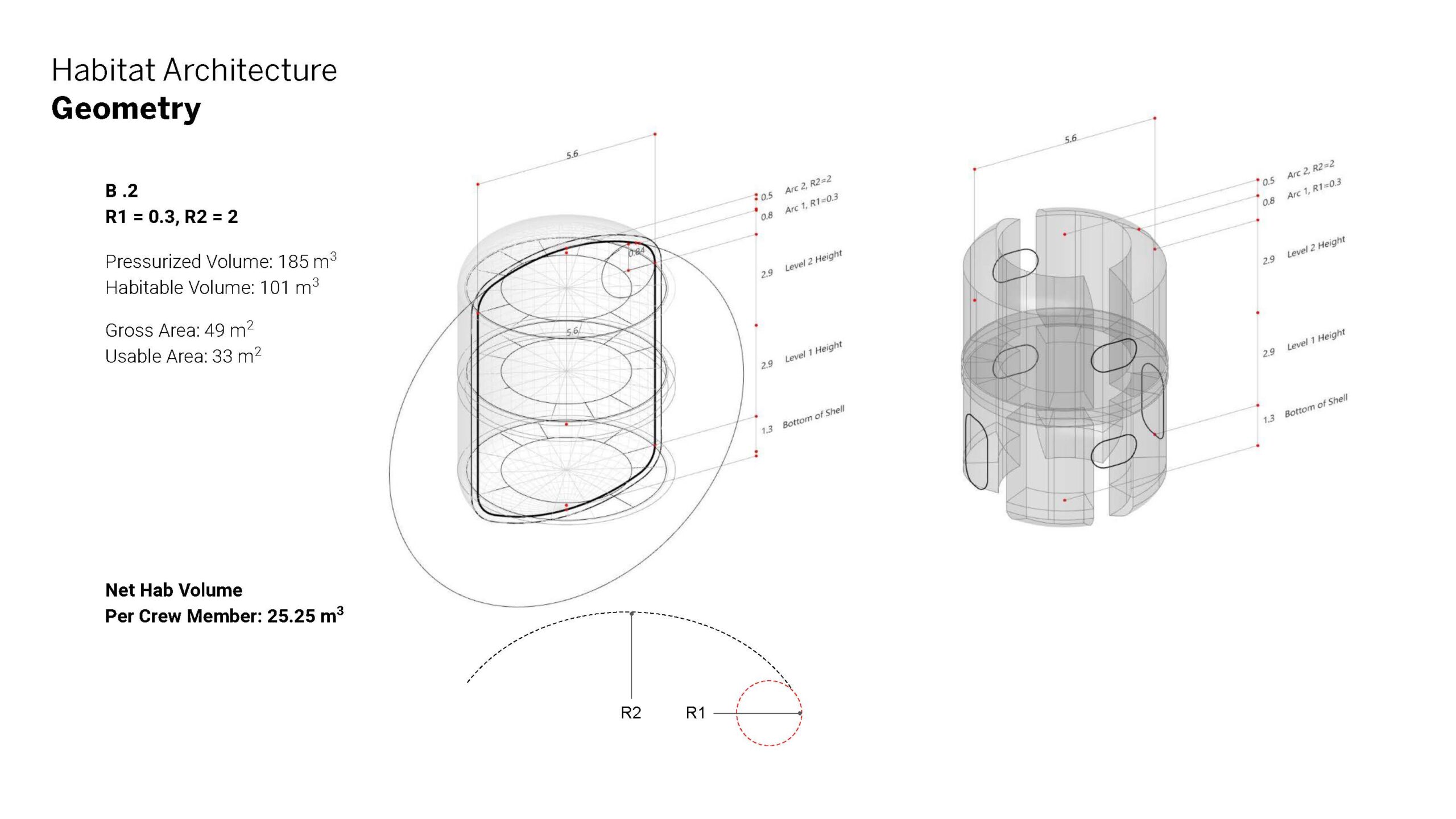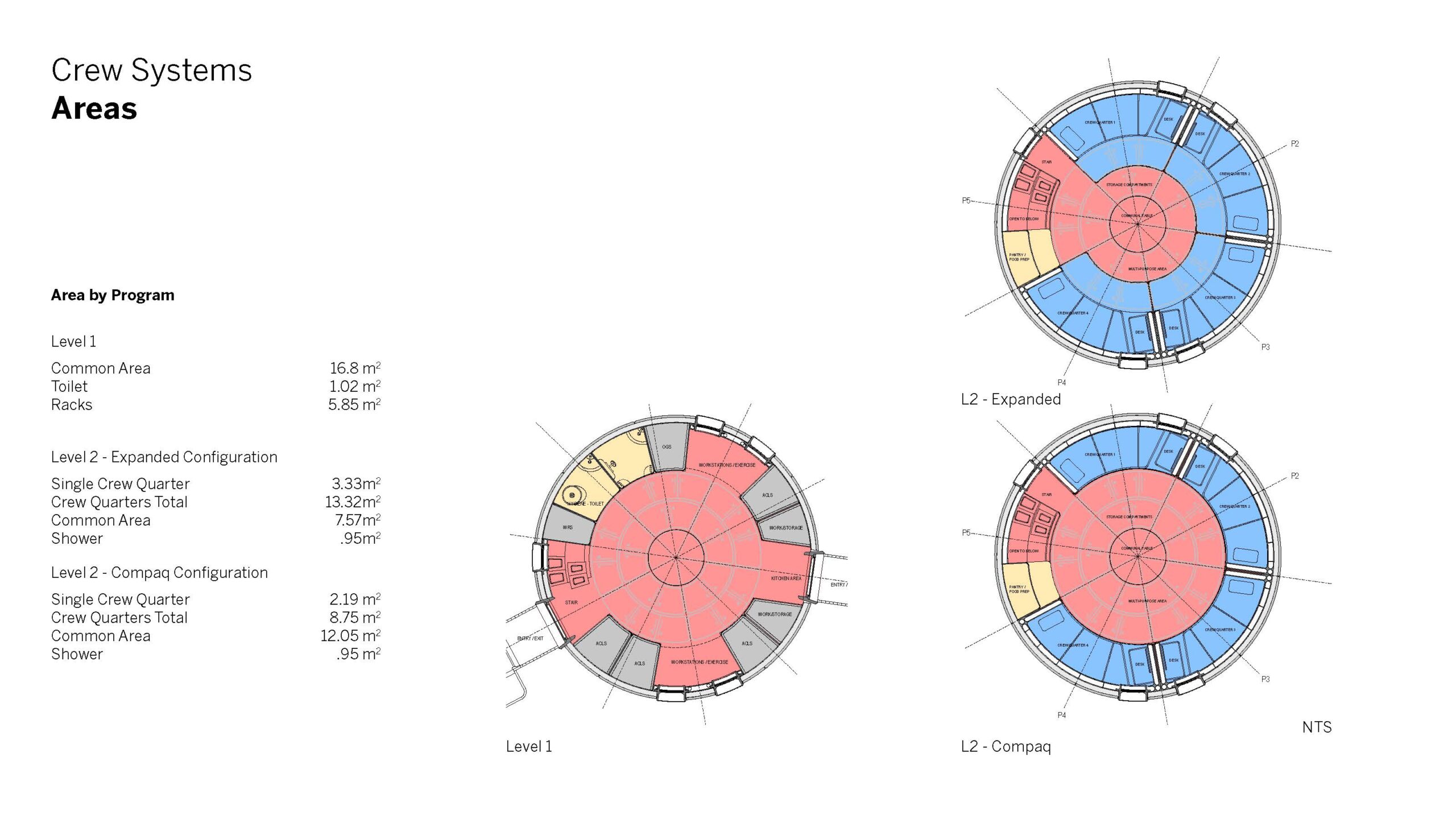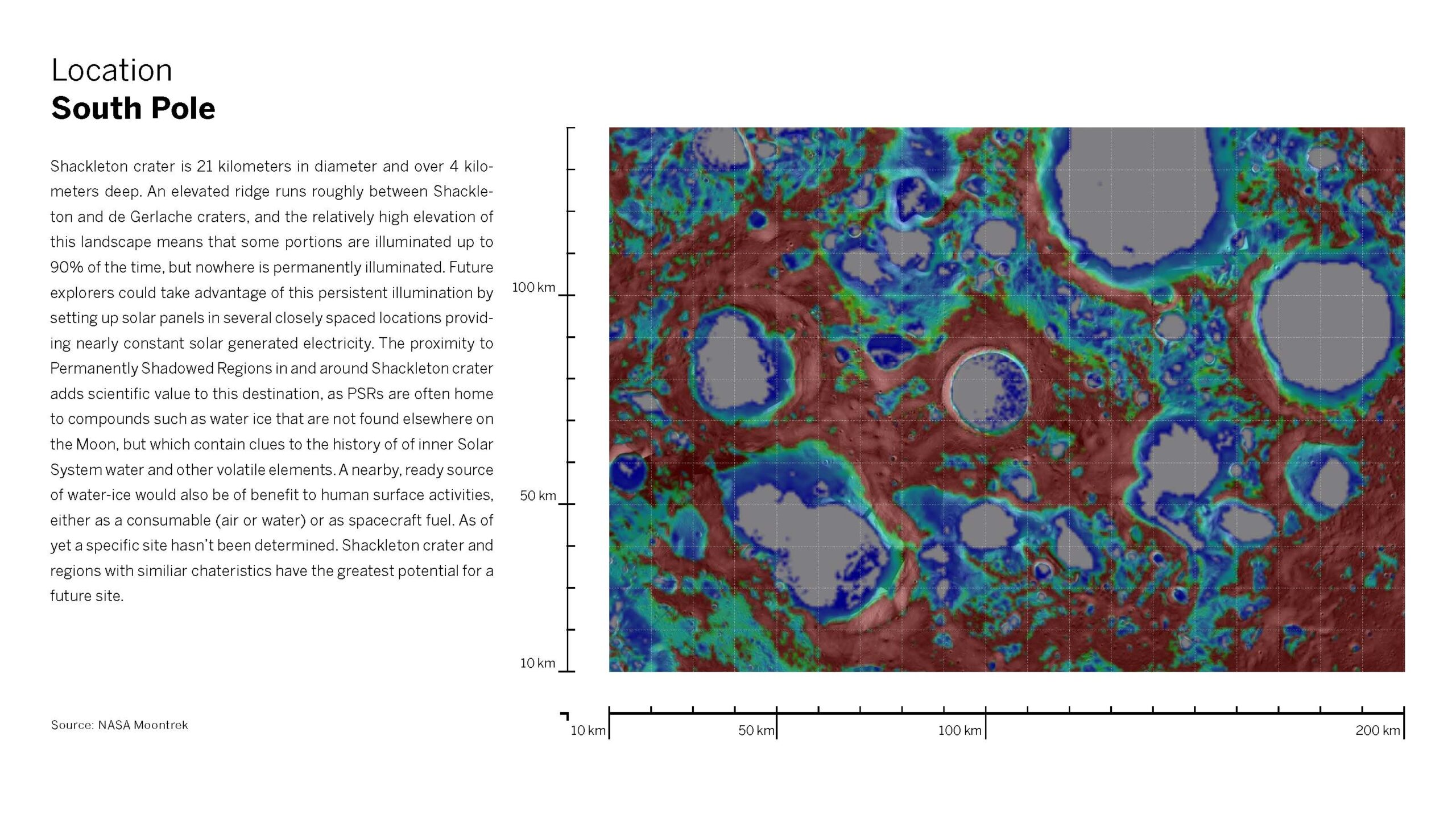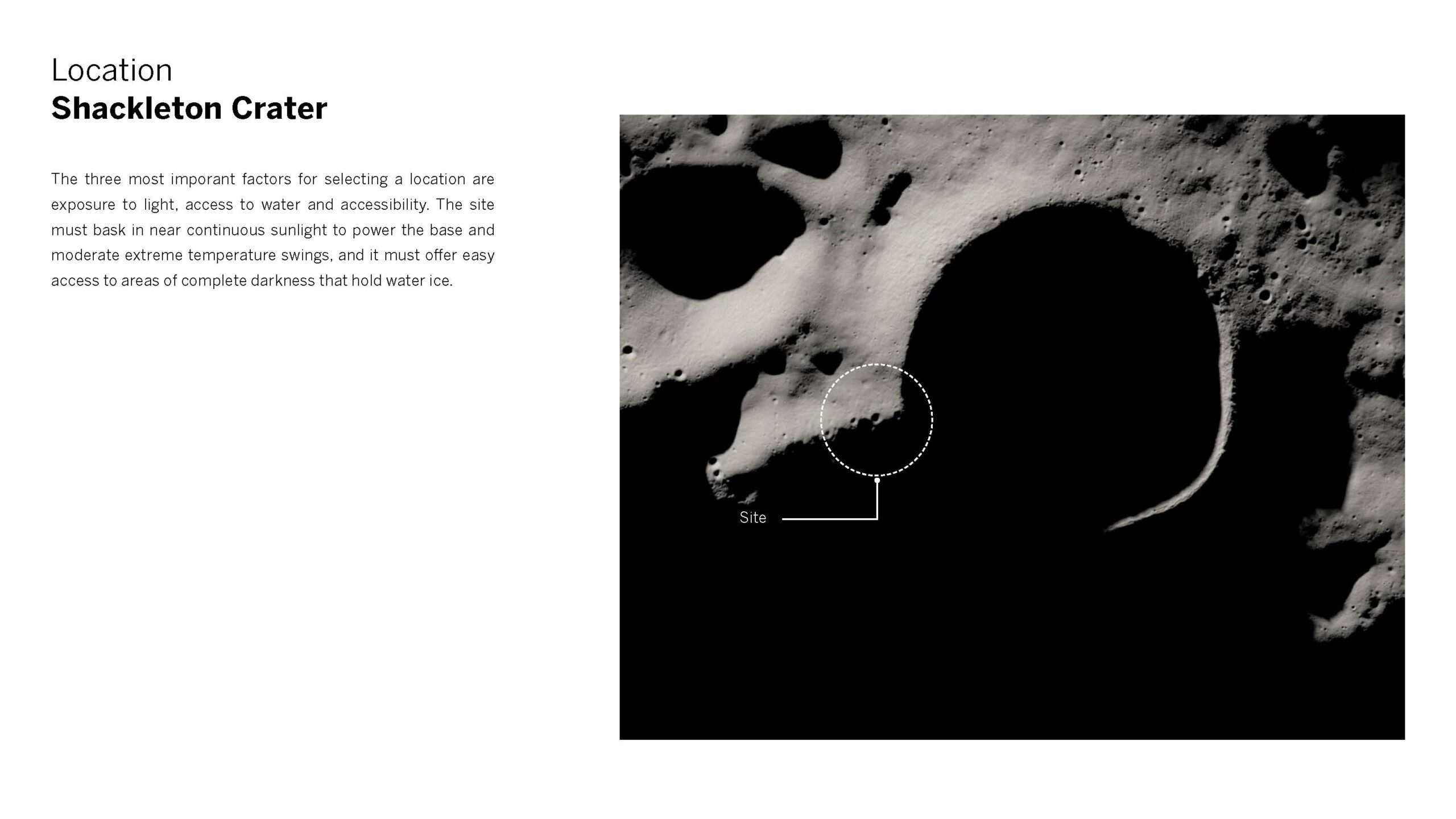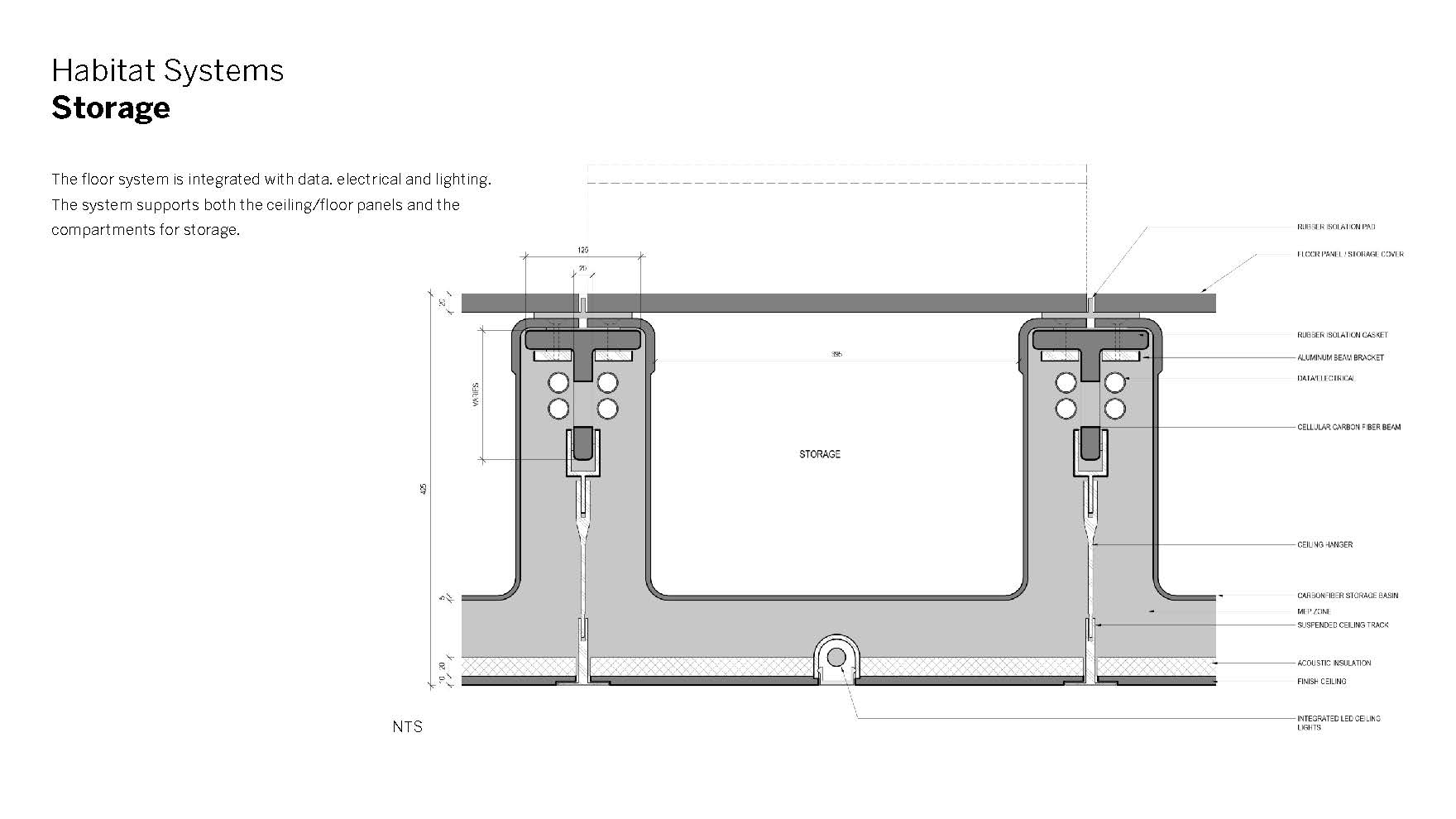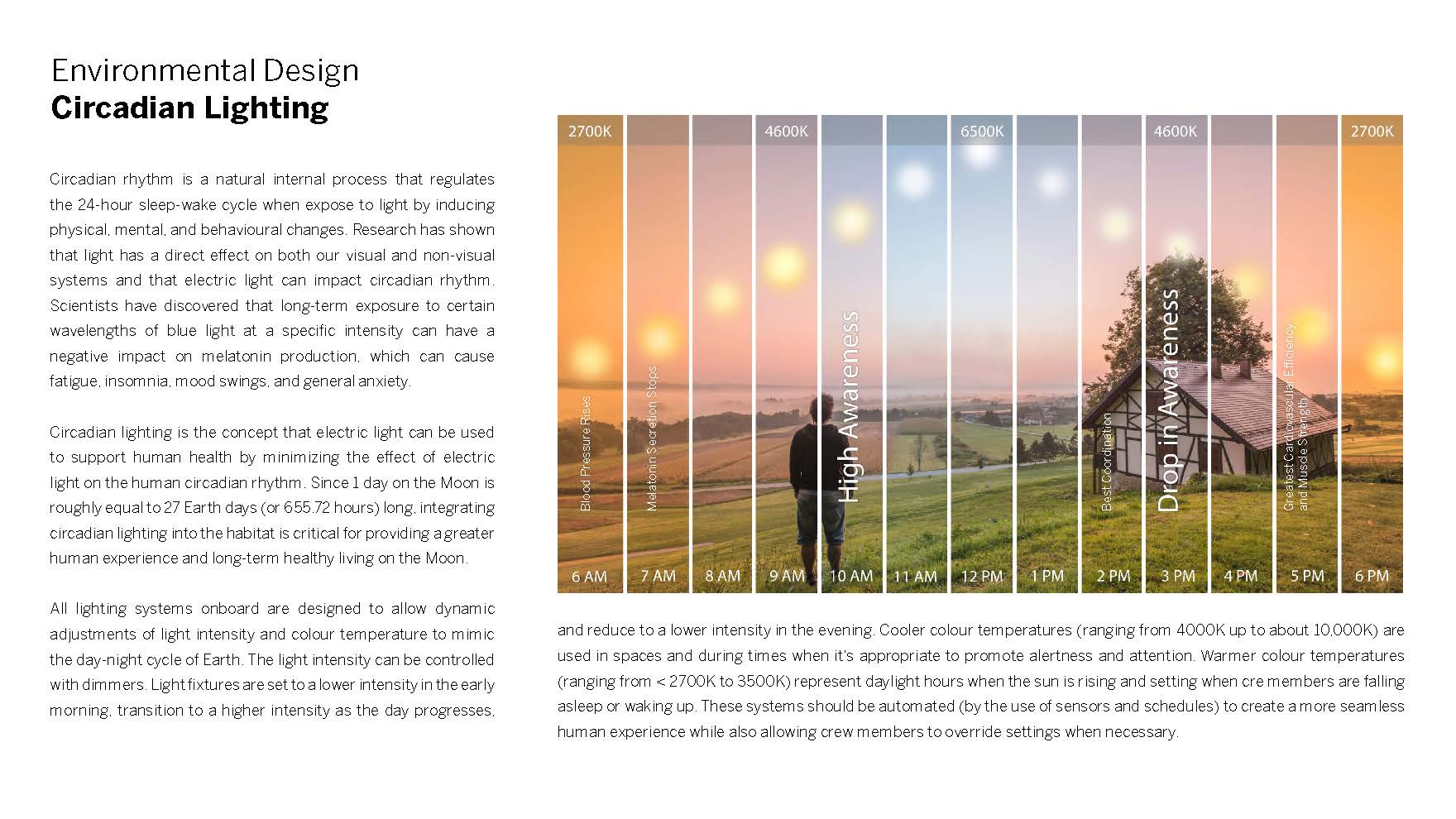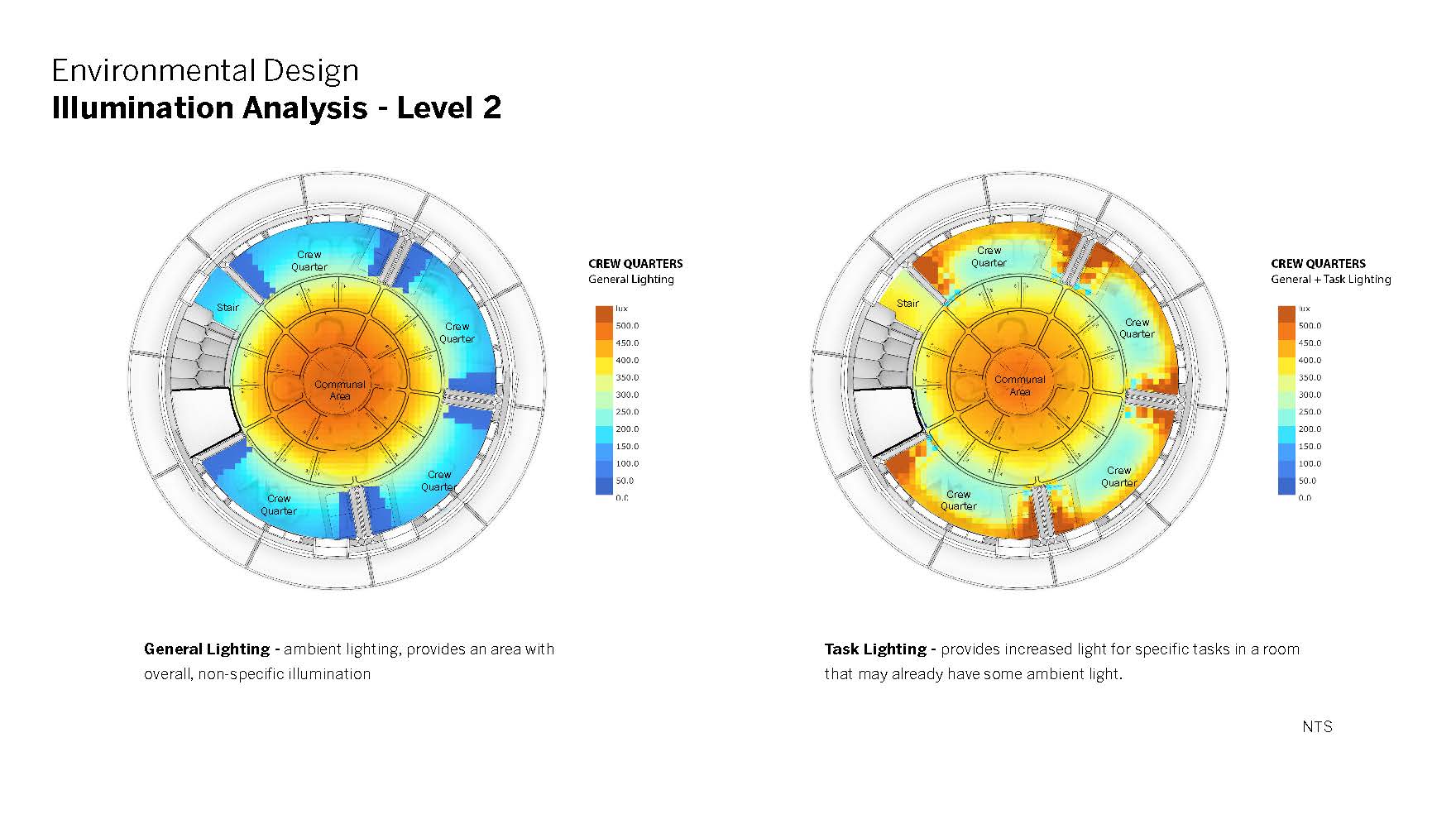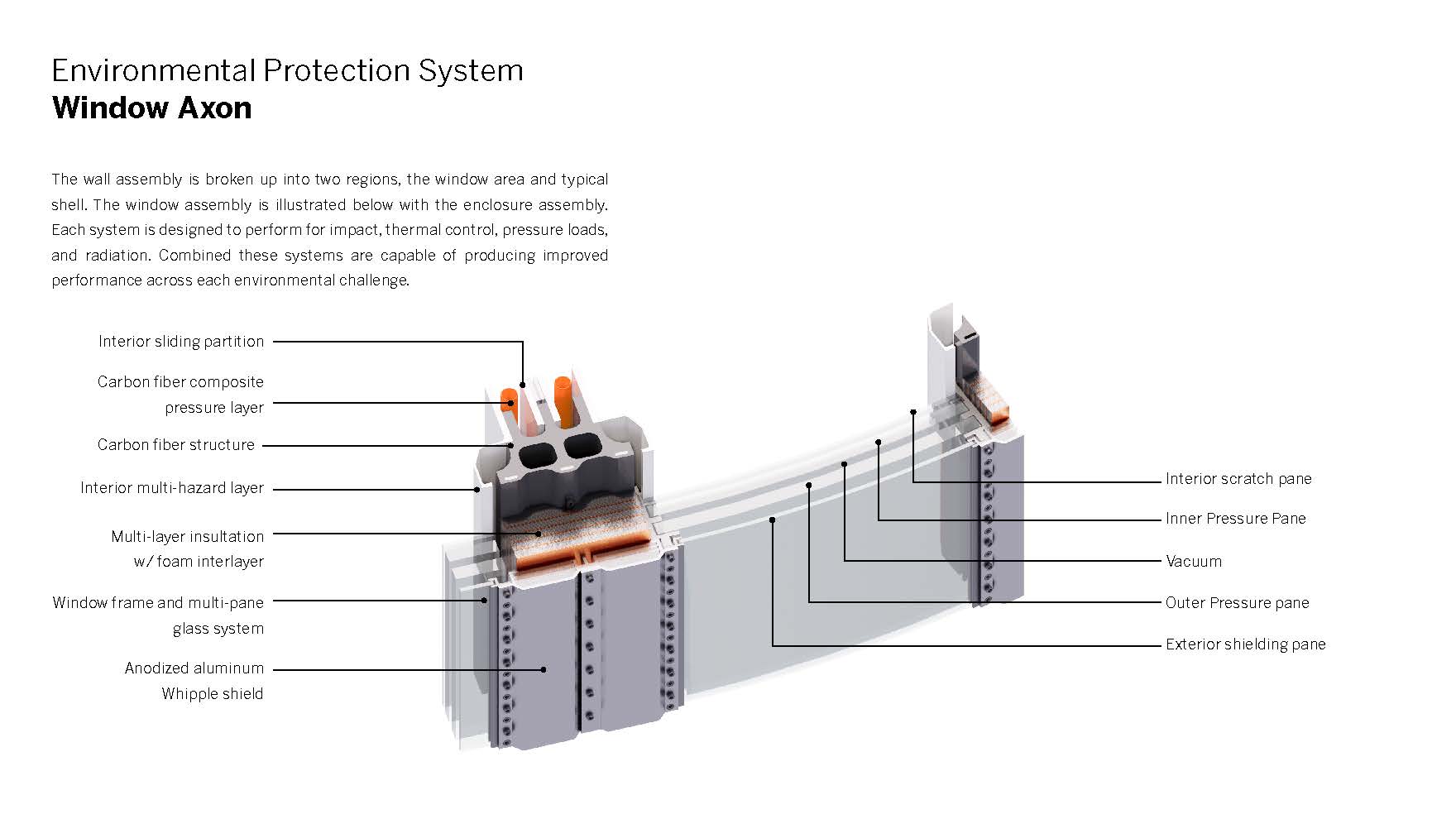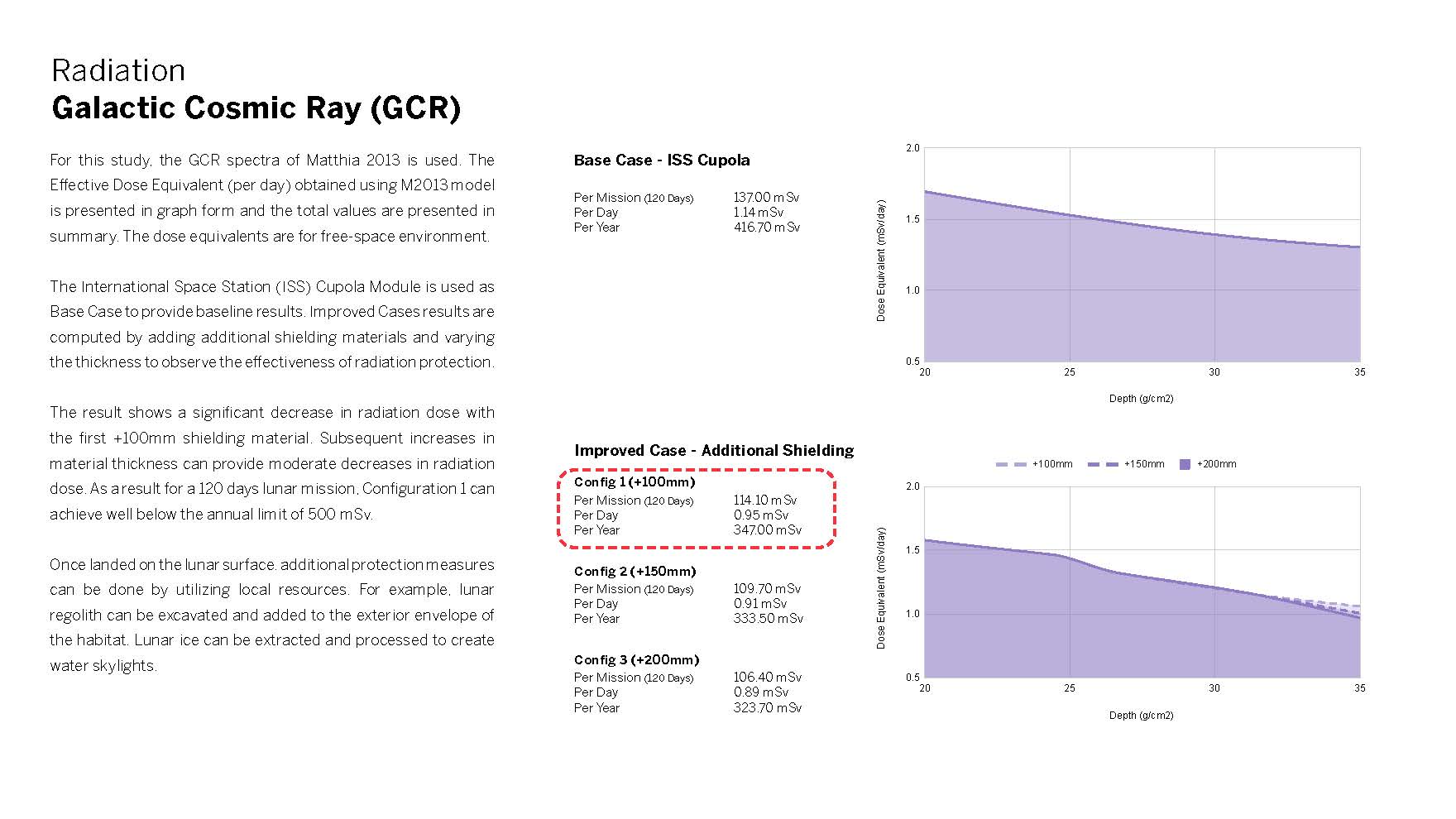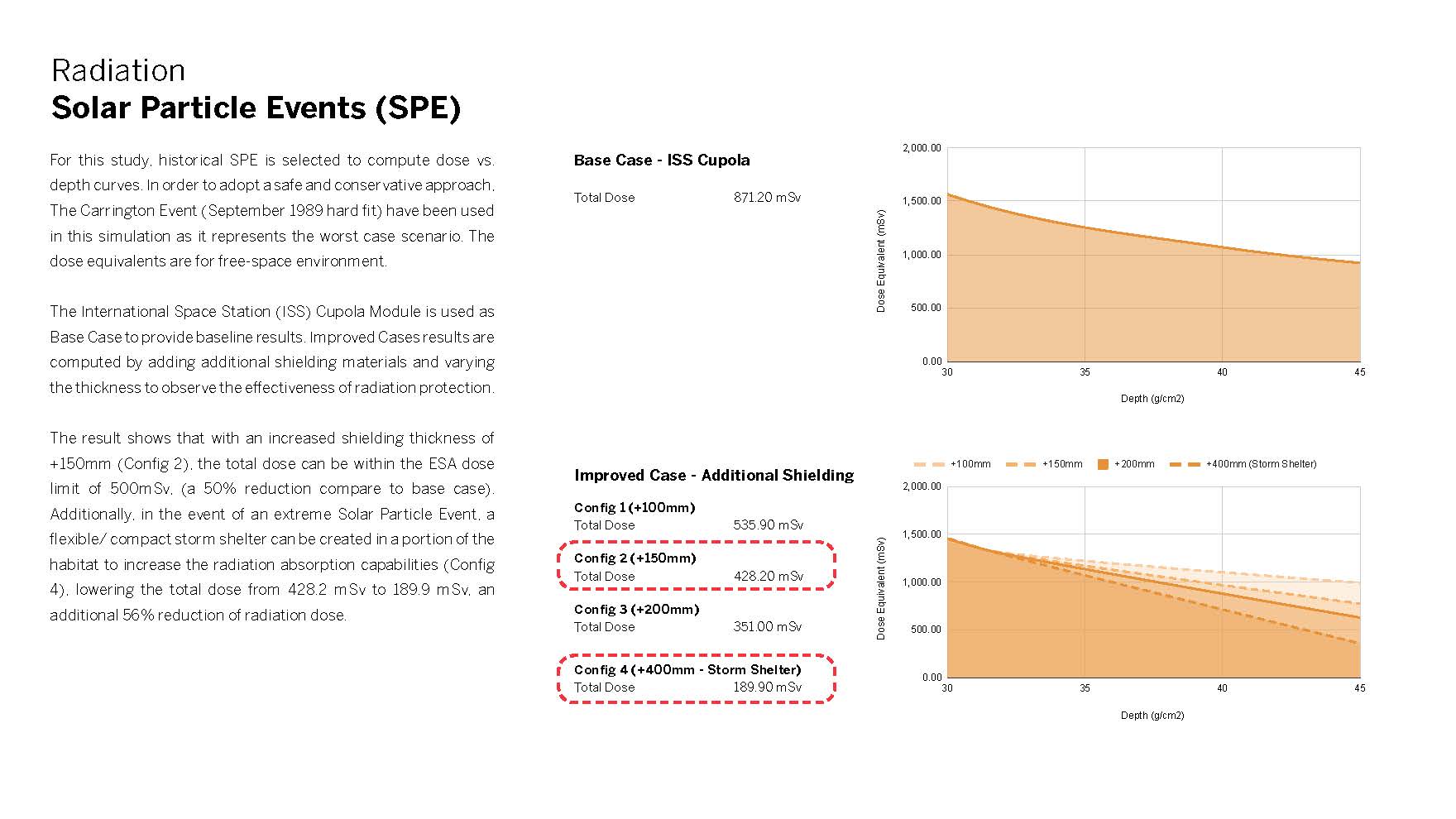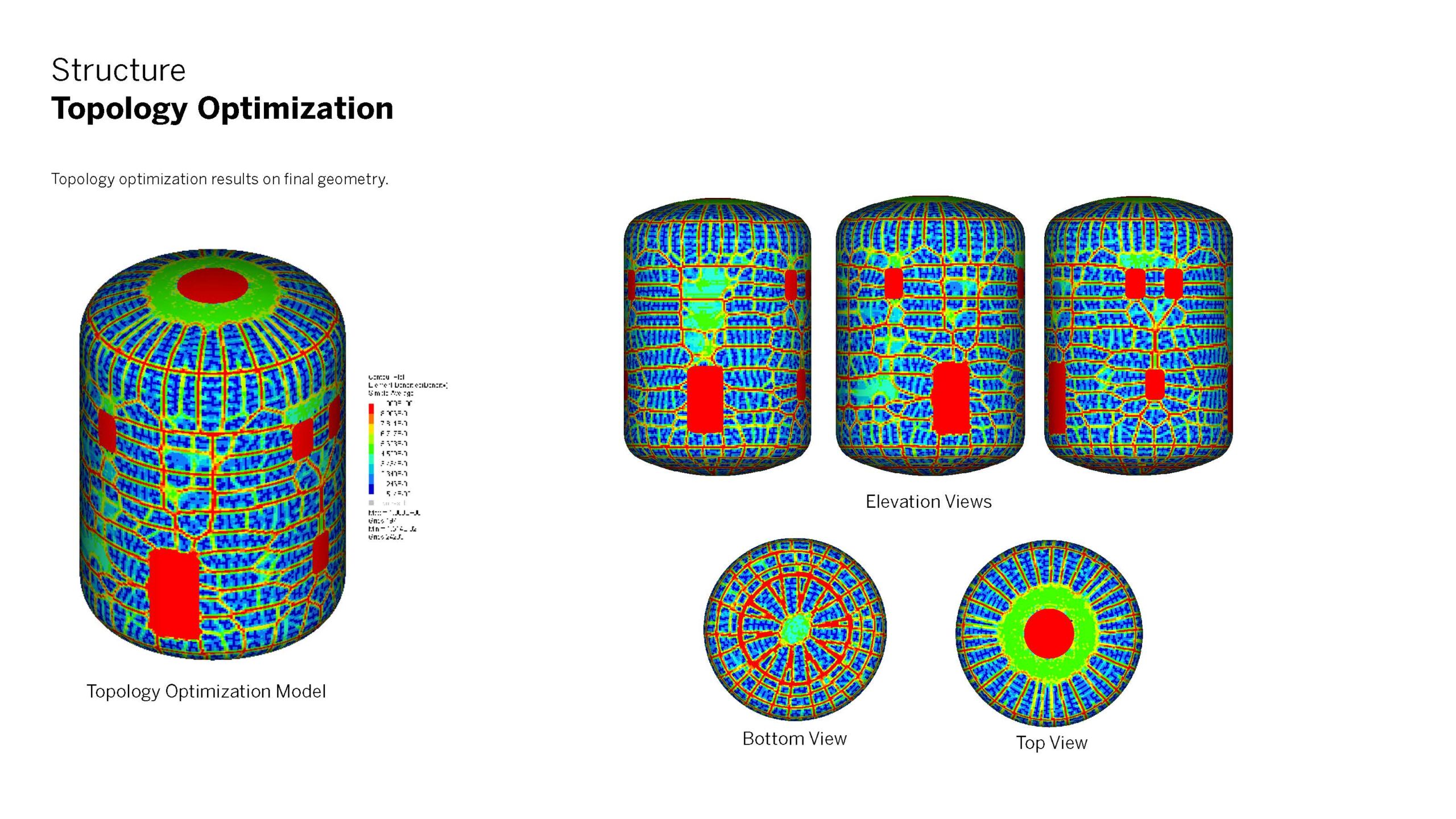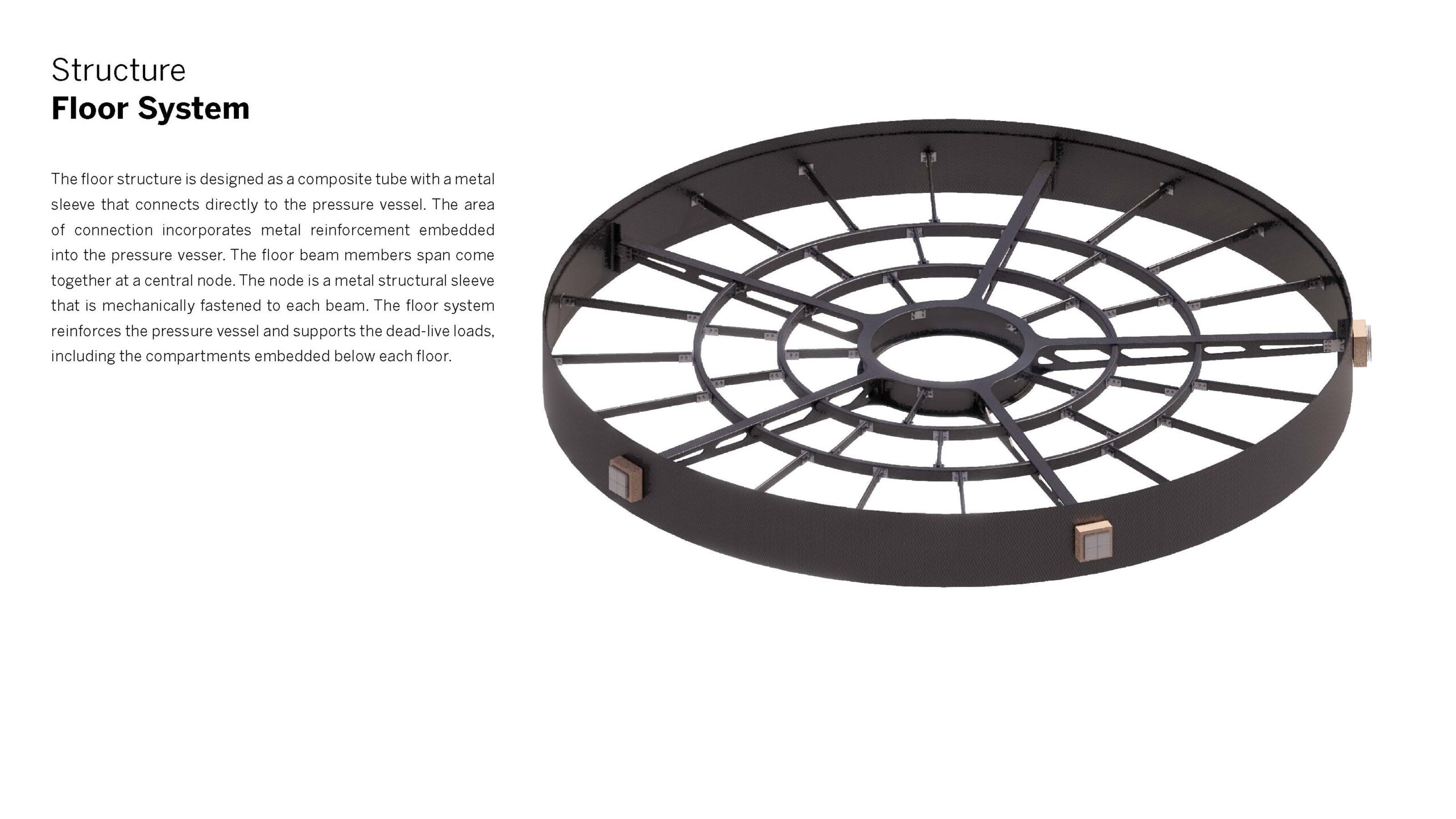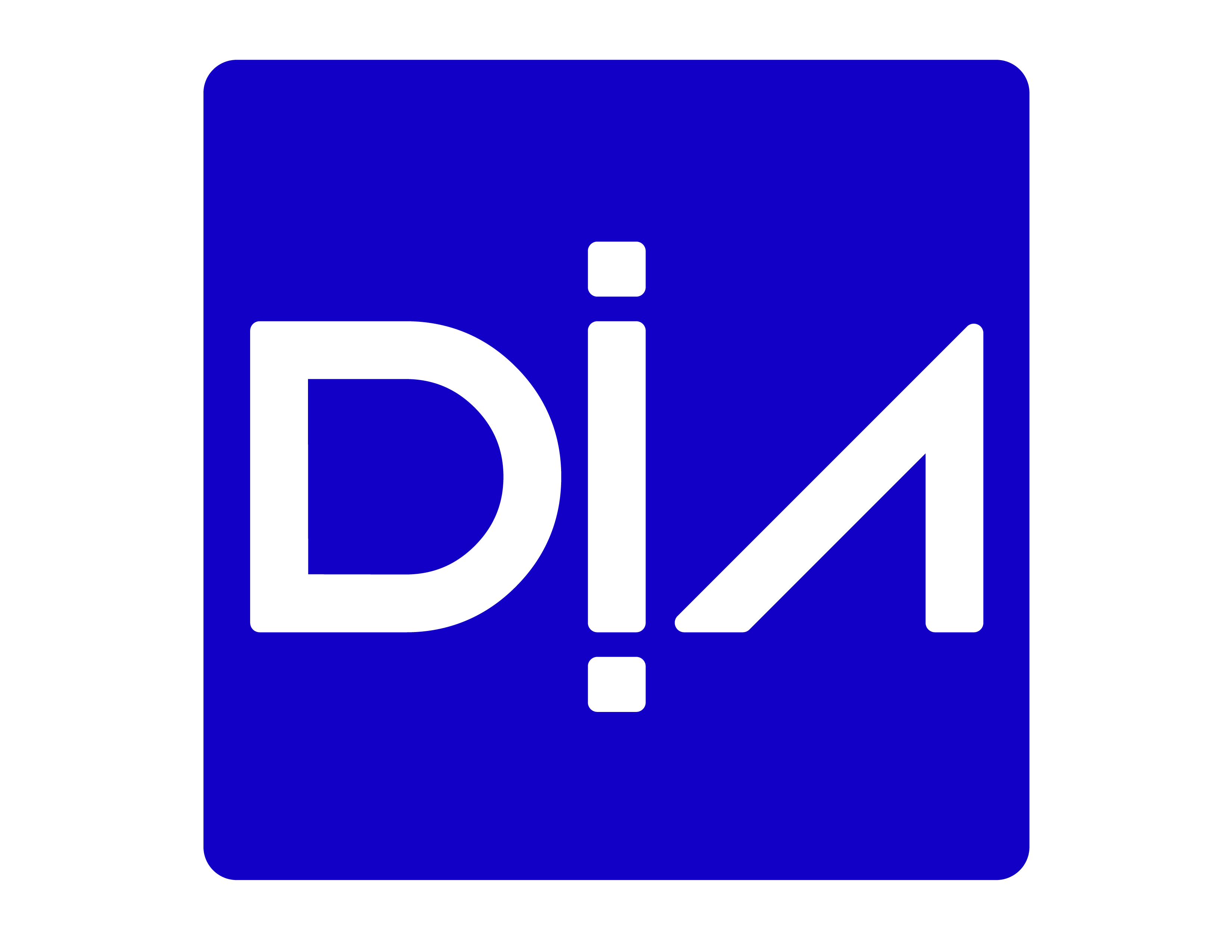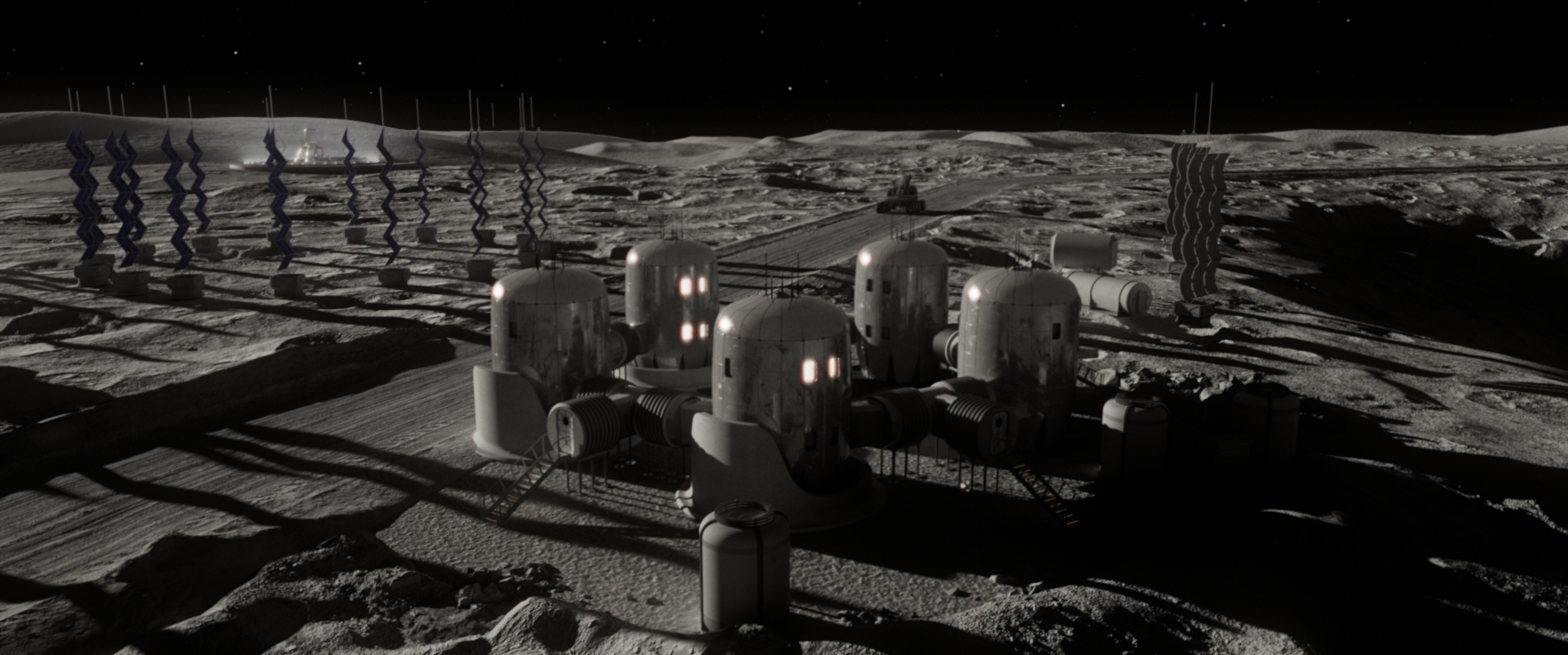
New Frontiers
Shackleton Crater, Moon
Typology: Space Architecture
Status: Concept
Credit: SOM, Lockheed Martin
New Frontiers is a collaboration with Lockheed Martin Space established to investigate next-generation lunar habitat architecture focused on designing for the human experience and behavioral performance associated with living and working in space for long-duration missions.
We applied a human-centered approach with an emphasis on the influence of environmental variables in the design. The design considered parameters such as anthropometry, lighting, temperature, human-machine interactions, comfort, and wellness. Human-centered architecture was a key element in our design concept and research, with a number of cross-disciplinary strategies used to help inform how we design habitats for the future.
My Role
I was the Primary Investigator and Lead Space Architect in the New Frontiers Project. I was responsible for helping build the partnership with Lockheed Martin that began in 2021 working directly with Engineers and Space Architects at Lockheed Martin Space. I worked with their team to research, design, and develop the concept for a human-centered lunar habitat. I coordinated the project internally and together with the Lockheed team established the mission architecture, parameters, and constraints for that would define the habitat concept. The Lockheed team provided valuable feedback and made critical contributions throughout the project. I focused on researching, designing, and coordinating the development of this concept with the teams at SOM and LM.
Process
The NHAB architecture establishes a new paradigm for habitat design which adopts human systems integration metrics and leverages architectural design methods applied to human performance challenges in the building industry. The collaboration between SOM and LM aims to demonstrate the potential benefits of infusing space sector expertise in habitat design with architecture and engineering (AE) industry expertise which leverages design technologies for the optimization of human performance and habitat systems. The proposed NHAB architecture is a reusable, flexible, scalable, and low-mass solution to providing integrated functions within lunar surface habitats for astronauts who will live and work under high-stress environmental conditions. Integrated spaces for science, maintenance, medical, and crew operations are an integral part of the design and consider anthropometric, safety, and environmental constraints.
The NHAB assumes a long-term mission context including future opportunities to explore, conduct science, and test technologies. The design anticipates crewed missions to the lunar surface will take place in the late 2020’s, with the ability to utilize the Gateway as a staging point. The NHAB will also be predicated on an assumed landed mass capability between 14-15 metric tons with critical surface infrastructure already in place (e.g, power, consumables, communication). The NHAB will also interface with additional elements (habitats, logistics modules, unpressurized and pressurized rovers, etc.) that can be added to the lunar surface architecture over time. To accommodate long-term human missions, the NHAB will support at least four crew members for mission durations of up to 120 days near the lunar south pole which is of particular interest in terms of access to resources, energy, and scientific potential.
Crew accommodation centers on the human element of the design process, where tasks and the required resources and equipment to support various activities are analyzed. The volumetric and area requirements stem from the crew operations during a mission and individual tasks are combined or co-located within provided zones to determine the total volume required. Anthropometric dimensional constraints such as vertical reach and the required motions for basic human operations such as living, hygiene, working, stationery, stowage, suiting, egress, and translation in a reduced gravity environment function as volume drivers and establish adjacencies.
The crew accommodation subsystem also presents several challenges following the concept of operations. Testing of the habitat interfaces, equipment, and accommodation subsystem will need to be performed to reduce human error, increase productivity, and improve overall safety and comfort.
